energy focus



















FROM ENERGY INDUSTRIES COUNCIL
FR OM



































VIEW FROM THE TOP EIC CEO Stuart Broadley looks back on 80 eventful years

TO



















































































































ENERGY TRANSITION


















Five countries leading the way in carbon capture and storage
OIL AND GAS

Amid the energy crisis, is gas the new green fuel?
NUCLEAR






































New nuclear is essential for global energy security

Celebrating 80 years of history, continued evolution and a fi rm commitment to build the world’s most powerful energy community

ISSUE 49 WINTER 2023
EN ER Five the wa P d ley
An excellent operational performance does not need many words of explanation, but one simple answer: Bertling. Track the Ecological Footprint for all transports you handle with us to know your emissions, proactively reduce and offset them to strive towards carbon neutrality.


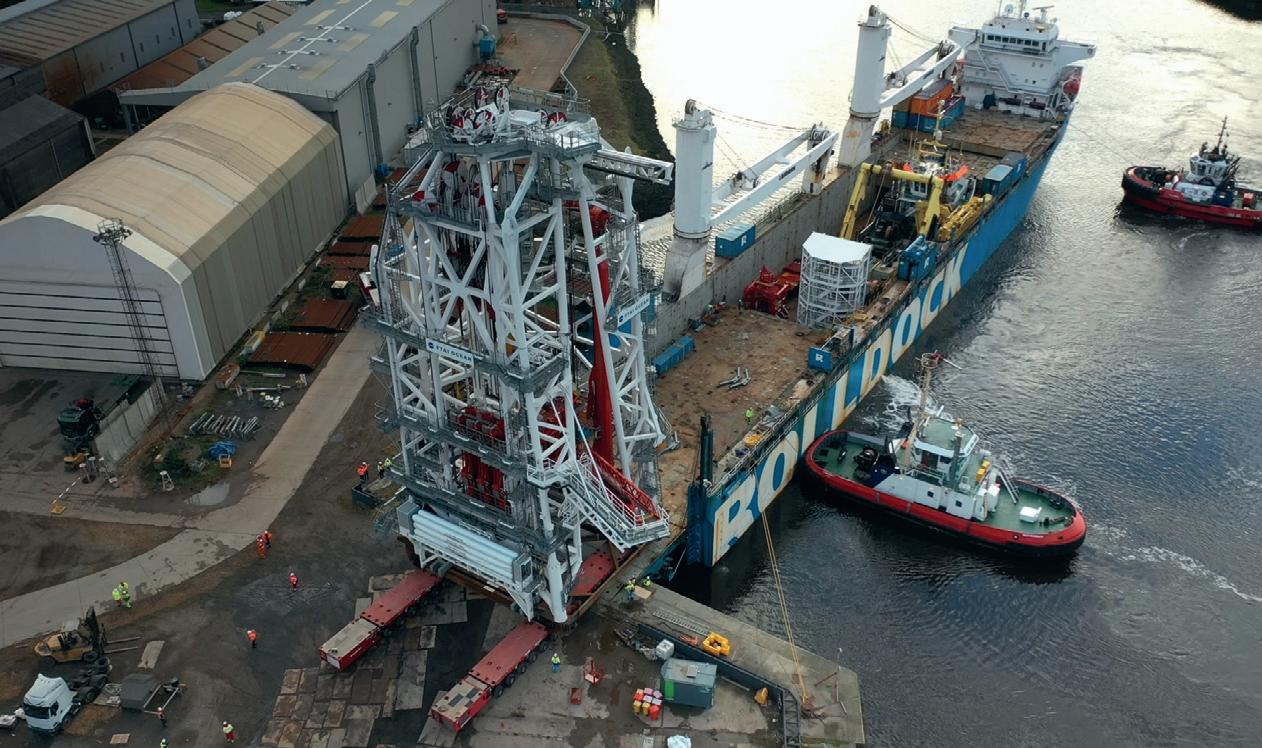

Visit www.bertling.com/sustainability to find out more.
FROM THE EIC
5 Foreword
From the Chief Executive
6 View from the top Stuart Broadley, CEO, EIC

9 EIC: From acorn to oak tree


Retiring Chairman Hugh Saville looks at the five factors that have spurred EIC growth in the last 25 years

10 News and events





Updates from EIC
12 Committed to delivering value, as always
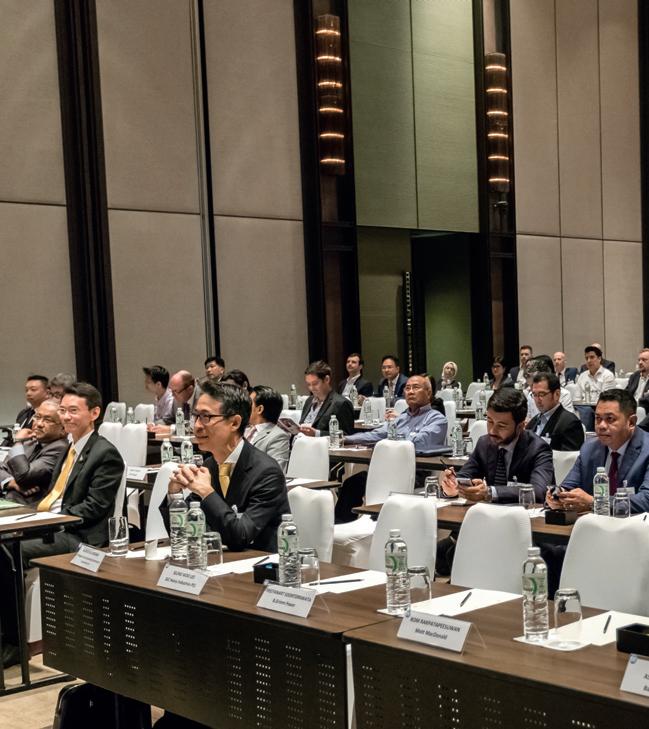
Nicola McGeown and Diveena Danabalan on how new departments – EIC Events Solutions and EIC Consult – are providing members with added value

14 Happy 80th Anniversary EIC!
Founders, partners and friends help celebrate eight decades of EIC
18 Special Feature Energy Focus looks back on 80 years of Energy Industries Council
22 The big question Is ‘net zero’ more greenwashing than reality?
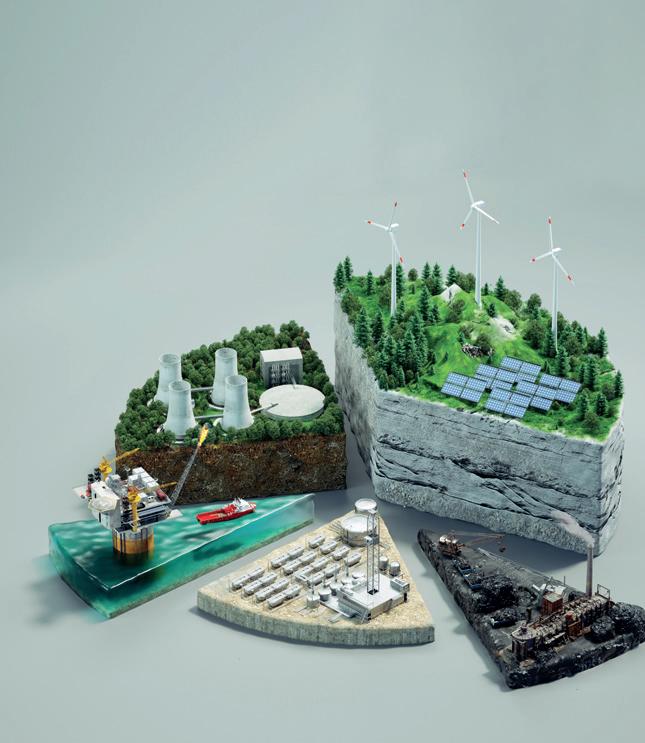
42 My business Matthew Cooper, Sales Director, Cutting & Wear
18 EIC at 80
ENERGY TRANSITION
26 Energy transition starts at home
Greg Guthridge, EY Global Energy & Resources Customer Experience Transformation Leader

26
Consumers drive energy transition
View from the top: Stuart Broadley
34 Massive connector offers UK energy crisis lifeline Simon Morrish, CEO, Xlinks
OIL AND GAS
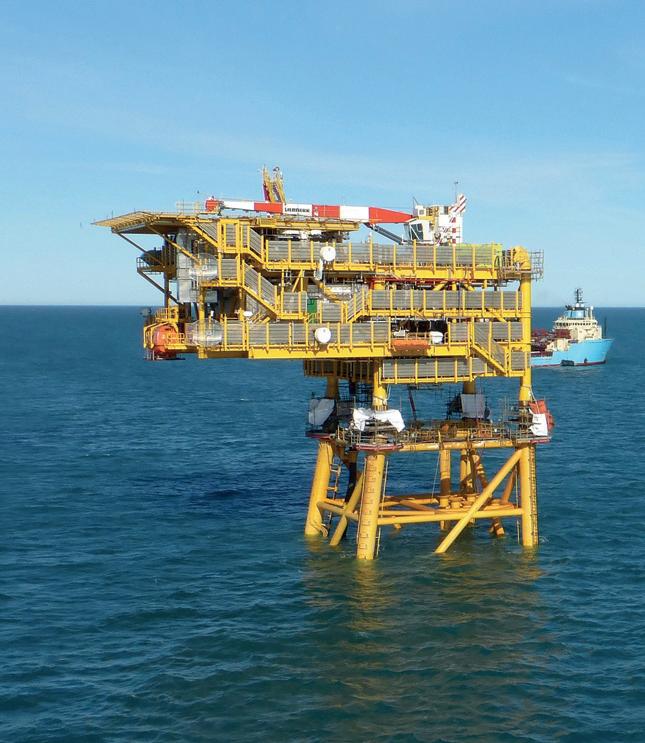
36 Is gas the new green fuel?
Dawn Summers, Chief Operating Officer, Wintershall Dea and President, GasNaturally
Should
30
Five countries leading the way in carbon capture and storage
Joanne Sivanathan, Energy Analyst, EIC
Lucas Machado +55 21 3265 7402 lucas.machado@the-eic.com
Production director Jane Easterman
Energy Focus is online at energyfocus.the-eic.com

ISSN 0957 4883
© 2023 The Energy Industries Council






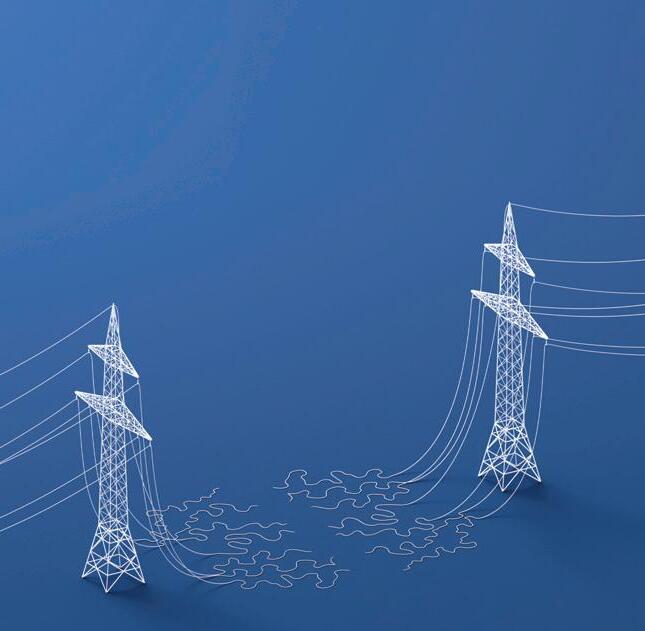
Energy Focus is the official magazine of the Energy Industries Council (EIC). Views expressed by contributors or advertisers are not necessarily those of the EIC or the editorial team. The EIC will accept no responsibility for any loss occasioned to any person acting or refraining from action as a result of the material included in this publication.
38 Overhauling Europe’s energy system
Cillian Totterdell, Climate and Energy Policy Lead, FleishmanHillard
NUCLEAR
40 Nuclear is quietly making a big return Tim Yeo, Chairman, New Nuclear Watch Institute
Publisher Redactive Media Group, Fora, 9 Dallington Street, London EC1V 0LN www.redactive.co.uk
RENEWABLES
POWER
Contents
49 WINTER 2022 06
ISSUE
38 Repowering Europe’s energy system 36 Gas goes green
Energy Industries Council 89 Albert Embankment, London SE1 7TP Tel +44 (0)20 7091 8600 Email info@the-eic.com
executive:
The
Chief
Stuart Broadley
your views,
you wish to send
please email: info@redactive.co.uk Editors Sairah Fawcitt +44(0)20 7880 6200 sairah.fawcitt@redactive.co.uk
Account director Tiffany van der Sande
Senior designer Gene Cornelius Picture editor Akin Falope Content sub-editor Kate Bennett Sales and advertising Richard Hanney +44(0)20 7324 2763 richard.hanney@redactive.co.uk
your magazine’s plastic wrap – check your local LDPE facilities to find out how.
Recycle
www.the-eic.com | energy focus 3
VISIT





TO FIND OUT MORE
services
“Richest gathering of industry experts I have experienced”
Peter Davies, EM&I
If you are interested in one of our sponsorship opportunities, or to book, get in touch with a member of the team today! Email internationaltrade@the-eic.com






Energy Exports Conference 2023 P&J Live Aberdeen I 6 – 7 June 2023 www.the-eic.com/EEC2023 SPONSORHIP OPPORTUNITIES AND BOOKING NOW AVAILABLE
Energy Exports
a
for
to:
The
Conference provides
unique opportunity
companies like yours
CONTACT US
“A truly global smorgasbord of opportunities to engage and indulge with key players in traditional and future markets” Mark Light, UnitBirwelco THE EIC WEBSITE
From the Chief Executive:
In this edition of Energy Focus, EIC is glad to bring readers a celebration of its 80-year history. Initially called the Council of British Manufacturers of Petroleum Equipment, our journey was started in 1943 by 13 founding members – including current members Siemens Energy and ABB – with the core purpose of helping UK oil and gas manufacturers to win a higher share of project work both domestically and around the world
Today, that core purpose is the same. Now with more than 800 members, EIC is still working hard every day across our 110 people and five regional offices to assist members in growing and winning business.
Some things, on the other hand, have changed: the energy mix has expanded to embrace technologies beyond oil and gas. The society we live in now is very energyagnostic, something that EIC recognised and adapted to more than 40 years ago – and today we continue to adapt, embracing the latest developments such as hydrogen, carbon capture and floating offshore wind.
EIC has also become a much more global trade association over the past 25 years. This is vitally important to our members, given the world we’re now living in – it ensures that we are part of global discussions and can facilitate new international relationships and friendships across our network of customers, suppliers and partners.
That’s why our 80th anniversary milestone is going to be celebrated everywhere we are in 2023. We’re planning a special calendar of events, about which you’ll get to know more in upcoming editions or by checking our website and following EIC on social media.
For now, I am privileged to be the View from the top interviewee for this commemorative issue. I am EIC’s 12th CEO and take my role seriously, but I can’t say that I don’t have a huge amount of fun, too. This is mainly due to working closely with all the amazing people who work across all EIC regions, all sharing the same objective of making EIC the go-to energy supply chain trade association, globally. Thanks
to them, we’ve been able to grow fast as we witness our members growing fast, and we have laid out a clear strategy to enhance member benefits and grow our global presence and voice into the future.
This is an impressive time for the global energy industry. All sectors and regions are booming at the same time, bringing countless challenges in terms of converting those opportunities to profits. These challenges include a shortage of critical talent, cost and salary inflation, a lack of investment clarity around net zero, concerns about geopolitical stability, and many more.
I’m sure these obstacles will be overcome by EIC and its members, as has happened at other moments of uncertainty during our 80-year history. Speaking personally, as we navigated challenging markets, I have been fortunate to work with and have the support of EIC Chairman Hugh Saville – undoubtedly the best chairman I have had the privilege of working with. Making tough decisions and having the confidence to invest and change is so much easier when you have strong and trusting interpersonal relationships with your key stakeholders. Hugh retires from EIC in 2023 after nearly 20 years of EIC service, and he will be sorely missed.
Stuart Broadley Chief Executive Officer, Energy Industries Council stuart.broadley
@the-eic.com

www.the-eic.com | energy focus 5
Foreword
Stuart Broadley CEO
View from the top

The Survive & Thrive initiative is something I’m very proud of and is the result of true teamwork across all EIC’s regional teams


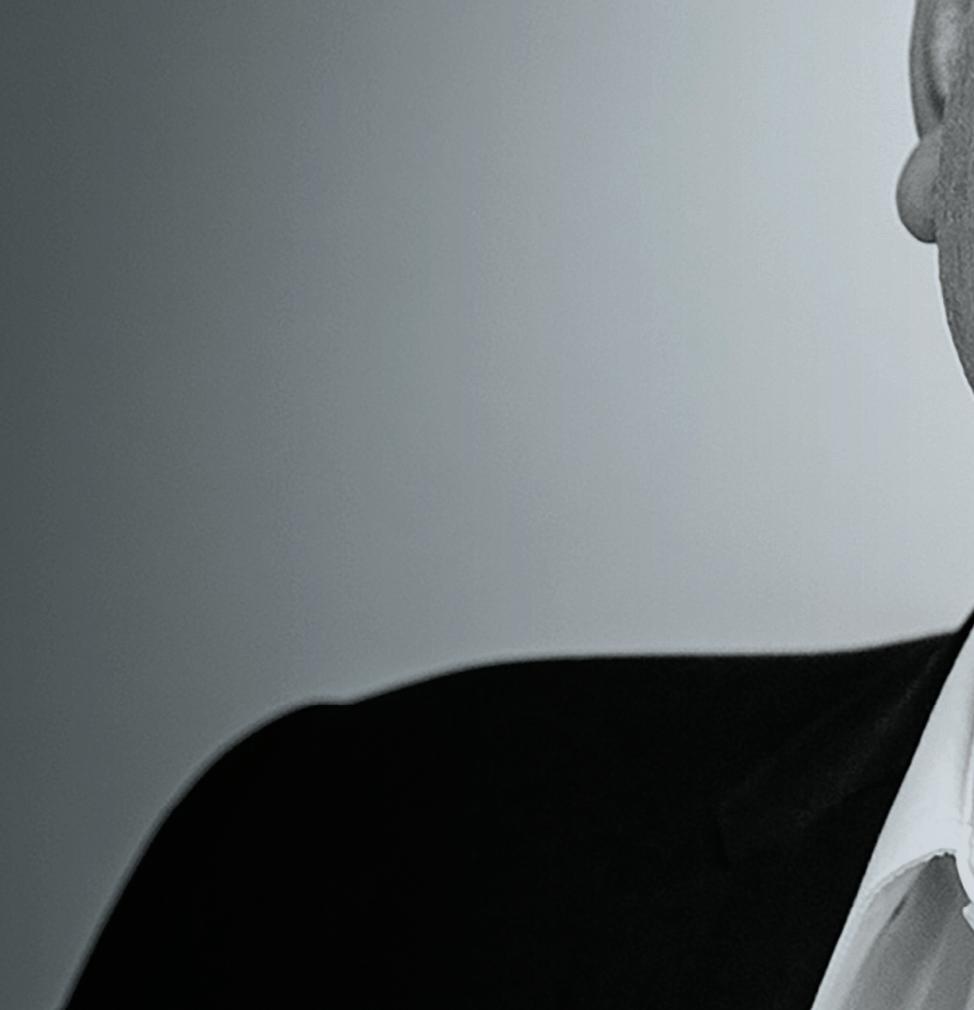


 Stuart Broadley, Chief Executive
Offi cer, Energy Industries
Council
Stuart Broadley, Chief Executive
Offi cer, Energy Industries
Council
6 energy focus | www.the-eic.com From the EIC
Stuart Broadley
Stuart Broadley talks to Energy Focus about the evolution and diversification of Energy Industries Council during the past 80 years, and how it will continue to support the energy community in the years ahead
EIC has changed significantly since it was founded in 1943. Looking back on its eventful 80-year history, what have been the key developments?
Celebrating EIC’s jubilee has allowed us the chance to research our history in more detail. As Winston Churchill said, “The further backward you look, the further forward you can see.” This research has highlighted three key decisions that we now know were pivotal to EIC’s survival and success today.
Firstly, it’s our energy agnosticism. We were set up in 1943 by 13 founding members as the Council of British Manufacturers of Petroleum Equipment, with a sole focus on oil and gas. It was not until 1981 that EIC, under Chairman Barry Bovey OBE, expanded its focus from oil and gas to all energy sectors, including nuclear and renewable energy. We changed our name that year to Energy Industries Council and since then have been uniquely able to embrace new technologies and energy transitions without missing a beat, without having to change our brand or purpose as so many others have had to do in more recent times.
Secondly, it’s our market intelligence. In 1993, membership reached a record low after the financial crisis and CEO Dai Somerville-Jones was looking for alternative sources of revenue. One idea was to analyse contract details published in journals and circulate only the most relevant information to members, at a lower cost. This new subscription service grew quickly, but it was not until the internet and a good website that we launched our online projects database in 2000. EICDataStream, as it is now badged, has become a primary source of market intelligence that helps our members to make smart business development, with 12,000 projects managed by our 30 analysts and consultants.
Thirdly, it’s our globalisation. We were set up in 1943 by Thomas Lacey Bonstow as a UK-focused business and it was not until 1994 that the Board approved the first establishment of an EIC office outside the UK, in Houston. Regarded as successful, this led to the Vision 99 strategy and the opening of further offices in Singapore, Rio and Dubai. These new regional offices, combined with EICDataStream, drove
a doubling of our membership in 10 years. The second phase of our globalisation was approved by our Board in 2017, opening up EIC membership to non-UK businesses for the first time. Today, 300 of our 800 members are headquartered internationally and we are working to build the world’s most powerful energy community of customers, suppliers and partners.
You are the author of the annual EIC Survive & Thrive insight report and have interviewed 250 company bosses during the last six years. What have you learnt from these discussions with the supply chain?
The Survive & Thrive initiative is something I’m very proud of and is the result of true teamwork across all EIC’s regional teams and departments, but it started out as a simple idea. I joined EIC in 2016 in the aftermath of the 2014–15 oil crisis, and businesses were really struggling. As I toured the UK, meeting with members, I was struck by how inspiring their survival strategies were, in spite of, or sometimes because of, the severe market challenges they faced –and yet no one seemed to know about the amazing work they were doing. That is how Survive & Thrive was born; why couldn’t we help to promote the inspiring work of these leaders, tell their stories, recognise their successes, and make policymakers aware of their needs, challenges and innovations?
During the past six years I have learnt so many things from these leaders, and with the seventh edition just starting, I am excited to hear the latest member success stories in 2023. The most striking thing I have learnt is that there is not a single, ‘best’ leadership approach. Instead, I keep meeting business leaders who reinvent the way they run and grow their businesses, adopting totally new strategies with increasing determination and creativity – indeed with increasing entrepreneurialism.
There are, however, three common threads that come up again and again. Firstly, talented teams and a positive culture are worth their weight in gold. Secondly, businesses with clear, unique and wellcommunicated strategies do best. Thirdly, remaining highly client-focused is more crucial than ever in times of rapid and disruptive change and market shocks.
About Stuart Broadley
Stuart joined EIC as CEO in 2016, after a 25-year career in oil and gas, power, renewables and defence with RollsRoyce, Wood, REpower and Hoerbiger. Together with the UK Export and Energy Ministers, he co-chairs the UK Energy Supply Chain taskforce, amplifying the UK energy supply chain’s voice to support policy development, boost investing, seeding and rooting of the supply chain in the context of energy transition, and step change internationalisation.
Stuart is Energy co-chair of the UAE–UK Business Council in the build-up to COP28, architect of the Energy Exports Conference, which brings US$500bn of opportunities to the UK each year, and author of the annual Survive & Thrive report on growth in challenging markets. Stuart has various nonexecutive director roles and in 2019 was invited to become a Fellow of the Energy Institute.
IMAGE: RORY RAITT
www.the-eic.com | energy focus 7
Q&A Stuart Broadley: From the EIC
EIC seems to be growing fast and getting a louder voice. Was this planned, and what is EIC’s strategy going forward? What are you hearing now from your members that needs to be heard by government? EIC was originally set up in 1943 to be the voice of the oil and gas supply chain and passionately represented those companies until the 1980s, when we expanded to represent all energy sectors, not just oil and gas. The Board at the time felt we could then no longer lobby one energy sector against another, so we stopped being a vocal advocate and instead focused on helping our members more directly, with our data, events, missions, national pavilions and networks.
This view about our purpose has reverted in the last couple of years, as it has become clear that energy and export policies are not working, and that supply chain leaders, whether in oil and gas, nuclear, renewable or other technologies, are unable to get their voices heard. The entire energy supply chain, companies of all sizes, places and strategies, need a voice to represent their views directly to policymakers, and so EIC has stepped up once again. We are proud to once again be the voice of the energy supply chain.
Members we speak to feel that the energy market is broken and that it is
increasingly difficult to confidently make investment decisions. This is heart-breaking when you think that net zero requires all of us to make smart, fast, significant and courageous decisions now, for the good of the planet, and to ensure our members achieve leading positions in the energy markets of the future.
Therefore, EIC will now be raising its voice relentlessly again, to get the views of our members heard and to ensure supply chain needs are addressed as a priority.
You are a strong advocate for encouraging more companies to invest in export and international growth. Why this focus? EIC’s slogan is Export – Diversify – Grow. Export comes first intentionally. Since our inception in 1943, our core purpose has been to help our members to win a higher share of business in key energy projects around the world. That core purpose has not changed in 80 years but today it seems harder than ever for businesses to grow their export and international share of business, and this is a challenge that all of us at EIC care about.
We know from our Survive & Thrive research that companies tend to choose faster, lower investment and lower risk strategies to grow when markets are challenging, which they certainly continue to be. Strategies such as innovation, diversification, digital and collaboration are often preferred over export growth. Every year for the past six years, the development of new export and international markets has been the least used, or the hardest, growth strategy. The consequence of this is that companies over-rely on domestic markets for the majority of their revenues, and this makes them far too vulnerable to market shocks.
All the evidence shows that global businesses are more profitable and resilient and faster growing than domestically focused businesses. We have the data, networks, insight and events, such as the Energy Exports Conference on 6–7 June 2023 in Aberdeen, to help our members break this log jam, and we will never stop working at this.
You have been CEO of EIC for nearly seven years – are you still enjoying it?
I feel privileged and fortunate to carry the CEO baton at EIC, and I am absolutely still enjoying it. I hope my enthusiasm and passion for this business, our amazing team and our world-class network of international members comes across in everything I say and do. With 80 years of heritage, EIC has already helped thousands of businesses in that time to adapt, grow and lead in their field. The most important role I can have now is surely to continue that legacy successfully into the future.
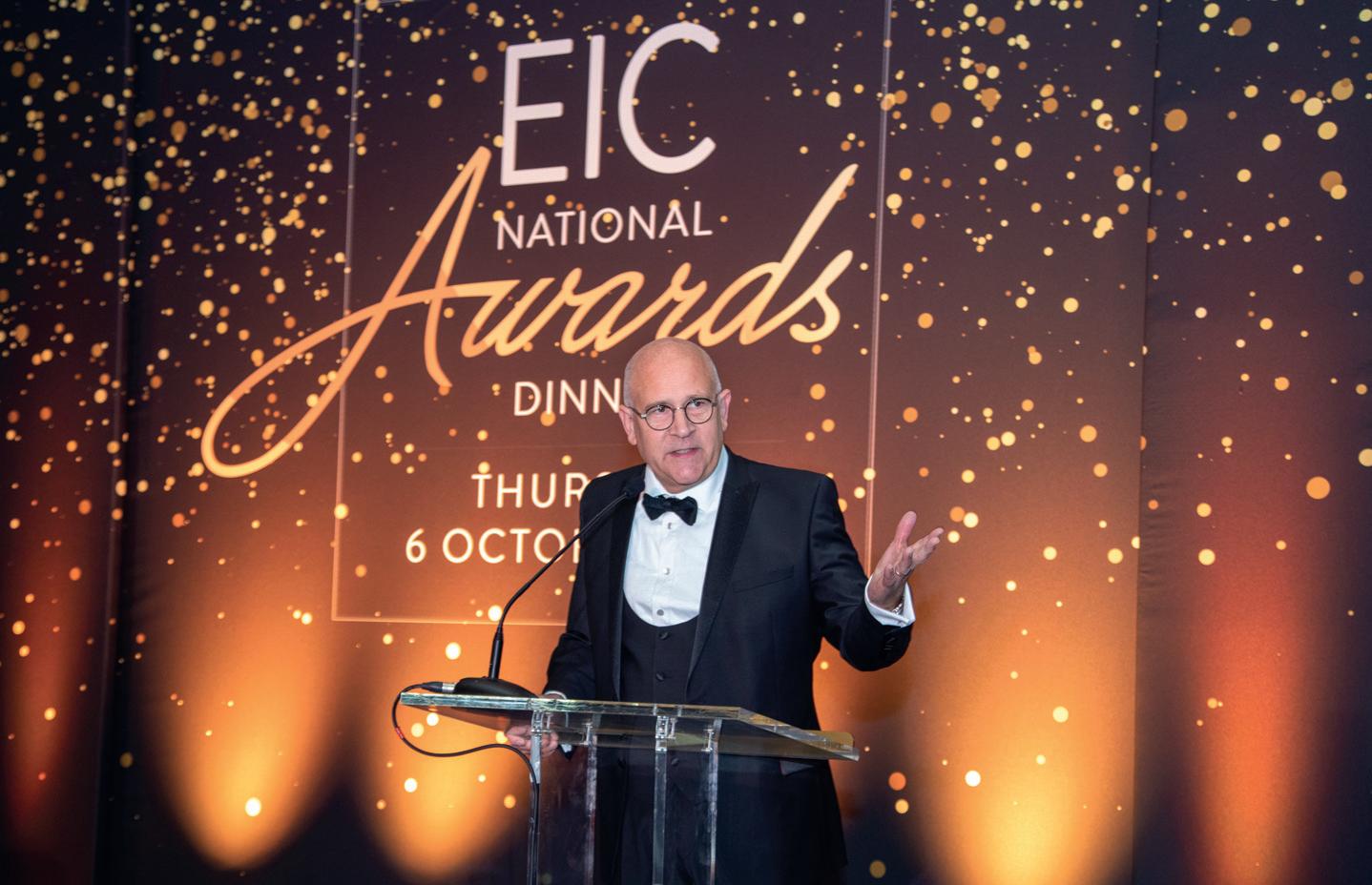
the EIC:
8 energy focus | www.the-eic.com
The entire energy supply chain, companies of all sizes, places and strategies, need a voice to represent their views directly to policymakers, and so EIC has stepped up once again
From
Q&A Stuart Broadley
1
Data
High quality project data has increased greatly in volume, coverage and quality.
In the late 1990s, such information was gathered and shared with members via four ‘committees’ – UK, European, Overseas and Power. Open to member company representatives, these met quarterly to review and update paper copies of project lists. The quantity of information varied, with the Overseas committee having more than 250 pages of projects listed by country. Data was sourced primarily from international engineering contractors, many with a UK base at the time, supplemented by information gleaned from members and publications.
In 2001, Alan Lewendon and Bob Gear joined EIC and, soon afterwards, Alan suggested moving the paper-based project information to an electronic format, enabling easier interrogation and addition of data. Alan christened the new product ‘EICDataStream’ and Bob applied his IT talents to develop the process, with many subsequent iterations to follow. That was the catalyst for a broad range of increasingly sophisticated electronic business information services that are now both routine and highly advanced.

2
Communication
Twenty-five years ago, communication was achieved principally by post, landline telephone and fax. The internet was in its infancy (EIC’s first website appeared in 1999) and email only superseded fax in the early years of the millennium. These new developments had
a significant impact on EIC communications, as information could now be sent instantaneously to members and other contacts globally. Suddenly communication had become much easier and faster, and EIC capitalised on that.
3
Global coverage
EIC has moved from a Londonbased operation with a Houston office (opened in 1995) to a global presence. Offices opened in Rio, Singapore (subsequently closed in favour of Kuala Lumpur) and Dubai (chosen over Abu Dhabi because of better availability of international flights from Dubai at the time). Offices in Macaé (Brazil) and Beijing existed briefly, while others considered for Calgary, Moscow, Venezuela and Hamburg did not materialise.
4
generated a range of engineering studies and EPC contracts – providing EIC member companies with significant sales opportunities.

Simultaneously, as ‘mega plants’ started operating in the Middle East, Asia and elsewhere, the UK refining and petrochemical industries contracted, while in the power sector, supply of flue gas desulphurisation plants for large coal-fired power stations dried up. It was therefore very exciting to see the UK government step up more recently, becoming world-leading in the production of offshore wind, and latterly setting high ambition for hydrogen, carbon capture and floating offshore wind.
The EIC acorn has indeed grown into a mighty oak tree that continues to spread its branches into new markets and opportunities across the globe.
Membership
The EIC’s decision in 2017 to expand membership to companies outside the UK (unthinkable even 10 years ago!) has been absolutely crucial in generating many new memberships and by raising our profile. Compared with 25 years ago, our international connections are now immeasurably better.
5
Market changes
The UK energy industry has changed significantly during the past 25 years. Initially, many international engineering companies had a UK operation, but due to acquisition, restructuring into other areas, or moving away, many no longer exist here. These companies routinely
Hugh Saville Chairman, Energy Industries Council


www.the-eic.com | energy focus 9
From the EIC From our Chairman
A word from our Chairman: From acorn to oak tree As the EIC celebrates its 80th anniversary this year, retiring Chairman Hugh Saville looks at FIVE factors that have led to the highest-ever growth of the leading energy trade association during the past 25 years
news&events
Conferences from EIC coming up in 2023
Egypt Petroleum Show 2023
Date: 13–15 February 2023
Location: Egypt International Exhibition Centre, Cairo, Egypt
About the EIC
Established in 1943, the EIC is the leading trade association for companies working in the global energy industries.
Our member companies, who supply goods and services across the oil and gas, power, nuclear and renewables sectors, have the experience and expertise that operators and contractors require. As a not-for-profit organisation with offices in key international locations, the EIC’s role is to help members maximise commercial opportunities worldwide.
Events
EIC LIVE events
You might have already noticed that 2023 is a special year for the EIC. And if our 80th anniversary is not enough to keep everyone excited for the upcoming months, we also have an incredible programme of events.

Following the return of in-person events in 2022 and the success of events, including our very own Energy Exports Conference, ADIPEC, OTC and Rio Oil & Gas, as well as networking meetings, training, masterclasses and market update sessions, the bar is indeed set high for this special year.
You will find all our in-person events, webinars and EICorganised pavilions at leading conferences and expositions worldwide, in our calendar at www.the-eic.com/events/calendar
Why attend? Egypt Petroleum Show is the most important oil and gas exhibition and conference in North Africa and the Mediterranean. It is a crucial platform in the energy calendar, bringing together government representatives, global CEOs, NOCs, IOCs, international service providers, EPCs, consultants and financiers to address the evolving opportunities in global energy markets.
Attendees will be able to gain direct access to primary stakeholders involved in detailing the region’s upcoming project plans, budget allocations, timelines, technical challenges and business opportunities to win contracts.
The EIC is organising the UK and EIC Pavilion. If you are interested in exhibiting with us or want more information, email international trade@the-eic.com to contact the International Trade team.
www.the-eic.com/Events/Exhibitions/ EgyptPetroleumShowEGYPS
Wind Energy Asia 2023
Date: 8–10 March 2023
Location: Kaohsiung Exhibition Centre, Kaohsiung City, Taiwan
Why attend? Wind Energy Asia is the first exhibition dedicated to developing the supply chain in Taiwan’s wind
10 energy focus | www.the-eic.com
UPDATES FROM THE ENERGY INDUSTRIES COUNCIL
Egypt Petroleum Show

Report
NEW REPORTS OUT NOW
EIC Report:CountryMozambique
Much has changed in Mozambique’s energy space since the EIC published its first report on the country in 2017. In only five years, more players have entered the market, projects have been sanctioned and new sectors are attracting investments.
energy industry. It intends to provide a platform for companies to expand into neighbouring East Asian markets such as Japan and South Korea, which are closely watching the country as a likely blueprint for future development.
In three years, Wind Energy Asia has established itself as the largest, most international wind energy exhibition in Taiwan and the second largest in Asia.
Send an email to international trade@the-eic.com to contact the International Trade team and register your interest.
www.the-eic.com/Events/Exhibitions/ WindEnergyAsia2023
WIND EXPO Japan 2023





Date: 15–17 March 2023


Location: Tokyo, Japan
Why attend? WIND EXPO is Japan’s largest wind energy trade show. As a well-established business platform for the latest technologies, information and people, the event contributes to the development of the wind energy industry in the country.
WIND EXPO gathers a wide range of products and services for wind power generation, from wind turbines and wind farm construction to maintenance and operation, and offshore wind technologies. The event is aimed at companies looking to develop new business opportunities, gain technical insights and consultations, and build and strengthen early business relationships.
The EIC is proud to be hosting the UK Pavilion and Trade Mission to WIND EXPO Japan 2023 in partnership with


the Department for International Trade. Contact the International Trade Team by emailing internationaltrade@ the-eic.com if you want to join us.
www.the-eic.com/Events/Exhibitions/ WindExpoJapan2023
External Aff airs

As we wait for the latest round of ministerial announcements, it has been a busy few months. The energy policy landscape and conversations are more important than ever, and within the External Affairs team we are busy engaging with a wide range of stakeholders to ensure that our members’ voices are properly heard.
We have engaged with a number of departments on what is happening across the sector and have worked directly with you to ensure that the feedback we provide, and the policy direction we take, is led by you. If you wish to be involved in these conversations and forums, please email Rebecca.Groundwater@the-eic.com.
Our work with all governments and regions is only increasing; we have been working on several consultations and are feeding into several policy areas. If you are not already aware of the work that we do in this area or would like to be involved in a bigger way, please do get in touch. Rebecca Groundwater, Head of External Affairs Rebecca.Groundwater@the-eic.com

The country continues to progress with its liquefied natural gas (LNG) developments despite the existing challenges, while actively exploring the potential of large-scale renewables. From its substantial offshore gas reserves to its burgeoning renewables sector, Mozambique is poised to become a nation to watch in the coming years.
Realising its full potential is critical to ensuring an economic recovery postCOVID-19 and establishing Mozambique as an LNG powerhouse and renewables competitor. Download this in-depth country report to learn why all eyes are now on Mozambique.

EIC Insight Report: ASEAN Operational

The Association of Southeast Asian Nations (ASEAN) is a regional organisation promoting greater cooperation between countries in South-East Asia across several policy areas. Since its creation in August 1967, ASEAN has expanded its membership and overseen the strategic integration of its member states.
ASEAN consists of Brunei, Cambodia, Indonesia, Laos, Malaysia, Myanmar, the Philippines, Singapore, Thailand and Vietnam. Collectively, it is on track to be the fourth largest economy by 2030, with a growing population of around 650 million people and one of the world’s largest middle classes.
Find out about ASEAN’s offshore and onshore wind, solar, hydropower, biomass, biofuel, energy from waste, energy storage, hydrogen, power and oil and gas in this free report: www.the-eic. com/MediaCentre/Publications/Reports
From the EIC News and events www.the-eic.com | energy focus 11
is a crucial platform in the energy calendar
Committed to delivering added value, as always
Since its founding 80 years ago, the EIC has grown to represent companies in all energy sectors. It is a journey that the EIC is proud of, and although energy priorities have changed since 1943, the EIC’s core purpose remains the same as when it began: to help members export, diversify and grow to win business across the globe. As we reflect on how the EIC has constantly evolved to meet continuous growth in its members’ demands, Energy Focus talks to the heads of two new departments launched in 2022: Nicola McGeown at EIC Event Solutions and Diveena Danabalan at EIC Consult.



Nicola McGeown
Interim DirectorRegional for UK & Europe EIC Event Solutions



Can you tell us more about EIC Event Solutions?



EIC Event Solutions came about as more and more member companies were looking to raise brand awareness, create a platform to talk about their products and services, and target the right audience by hosting in-person or online events.
We have a dedicated team of event professionals offering a bespoke event management service to simplify the entire event planning process from start to finish, allowing our clients to focus on their day-to-day jobs.
How can companies leverage EIC Event Solutions to effectively reach potential clients and partners?
Our bespoke event management offering allows clients to use as much or as little of the service as required and provides for a range of budgets. Some companies use the service as a marketing tool to reach energy supply chain companies in a specific region or on a global scale. Others require a full service, from event conception to completion.
We work very closely with the EIC Consult division, offering webinars and events that complement their market intelligence service. One example of our collaboration involved a recent report on nuclear newbuild opportunities in Europe, compiled by Diveena and her team for member company TÜV SÜD. The Event Solutions team worked closely with Consult to create a webinar platform, allowing TÜV SÜD to present details of the report, along with invited key industry speakers, to a carefully targeted audience.
What have been your greatest accomplishments so far?
Providing a service to our members that not only gives the brand awareness they are looking for but has also delivered post-event opportunities and led to winning business.
How is your service part of the EIC’s 80-year journey?
It is a natural progression in EIC’s service to the energy sector. Many energy companies have taken a step towards diversifying their business into the clean energy marketplace, and our services can both guide and promote this transition for the future.
Diveena Danabalan Head

EIC Consult



What sets EIC Consult apart from other consulting services?
Consult has hit the ground running due to the years of industry experience that EIC already has under its belt. Our Market Intelligence database offering – EICDataStream, EICAssetMap and EICSupplyMap – is well known, and our depth of knowledge is second to none, giving us a solid starting point.
12 energy focus | www.the-eic.com
Many energy companies have taken a step towards diversifying their business into the clean energy marketplace, and our services can both guide and promote this transition
UPDATES FROM THE ENERGY INDUSTRIES COUNCIL
Like all EIC’s offerings, Consult’s business model is specifically built to benefit our members, but we have also had success with non-members. We pride ourselves on our flexible, collaborative relationship with clients, tailoring our approach and offerings project by project.
No two clients are the same, which gives us an edge in customer service. I am proud to say that we have produced exemplary work for our clients throughout the year, which keeps them coming back for more!
Can you tell us more about the synergy between EIC Consult and EIC Event Solutions?
As two teams that produce bespoke offerings, it was only a matter of time before Consult and Event Solutions collaborated! One of our sweet spots is informing a client’s business development direction/strategy – Nicola highlighted a great example involving our joint client, EIC member TÜV SÜD.
Before becoming Head of EIC Consult, Diveena Danabalan (left) worked with EIC’s renowned market intelligence databases: EICDataStream, EICAssetMap, and EICSupplyMap Meanwhile, led by Nicola McGeown (right), EIC Event Solutions helps deliver a seamless, flexible and fresh event experience in-person and online

Another example of our synergy in action is that Consult successfully conducted a UK supply chain mapping exercise for a non-member operator to support the development of its Phase 2 application for the Cluster Sequencing for carbon capture, utilisation and storage deployment. Off the back of this, Event Solutions ran a very successful supply chain procurement event with the same client plus others in the Humber Cluster. Together, our teams are the dream valueadd for clients!
What have been your greatest accomplishments so far?
For me, it’s satisfied clients – we’ve grown and maintained some unique relationships because our clients love our work, with repeat work despite being just over one year old! It’s very much a two-way street; while we add value for our clients, our work with them forces us to utilise our databases in different ways, which inevitably leads to new ideas around our products and the bettering of our data, ultimately benefiting our members.
How is your service part of the EIC's 80-year journey?
EIC has been on an 80-year journey since its inception, and these consulting services are a natural part of that evolution. We’ve identified a need for it from members and non-members, and both offerings build on our existing market intelligence and events strengths. As both of our services are flexible in their clientele, I am convinced this will open up new avenues to EIC as it strives to become the global go-to trade association for the energy supply chain.
Two new businesses, one aim
EIC Consult
EIC Consult provides in-depth market intelligence outputs to members and nonmembers using EIC’s proprietary databases, its global network of contacts and its in-house analytics knowledge of global energy markets.
EIC Event Solutions
EIC Event Solutions offers expert event services, supporting EIC clients and other companies that can benefit from the EIC’s extensive experience.

With these two new businesses, EIC now offers exclusive consulting services with customised insights augmented by EIC’s well-known rigorous approach to energy market data gathering and analysis.
By continuously adding value to member companies, the EIC further develops its ambition to be the global go-to trade association for the energy supply chain.

From the EIC News and events www.the-eic.com | energy focus 13
Our work forces us to utilise our databases in different ways, which leads to new ideas around our products and the bettering of our data, benefiting our members
Happy 80th Anniversary EIC!
This year marks EIC’s 80th anniversary, and Energy Focus could not be more excited to celebrate all that EIC has accomplished in collaboration with members, partners, employees and friends. It is because of their continued support that EIC has been able to evolve continuously since its founding.
We asked two founding member companies and some of EIC’s key stakeholders and partners around the world for their reflections on EIC’s 80th anniversary. To keep the celebrations going, we will share all their kind words and congratulatory messages in every edition of Energy Focus this year.
As a founding member of EIC back in the 1940s, ABB has enjoyed and cemented a strong relationship with the organisation over the years, and across our many businesses throughout the world.








We view EIC first and foremost as one of the strongest sources of market and business intelligence for the global energy industries. The tool we use most, with hundreds of subscribers globally, is EIC’s daily updated EICDataStream energy project database, covering all energy sectors and countries.





















































































EICDataStream is invaluable, helping us to track CAPEX projects from inception through to completion while also identifying new business opportunities. We also have access to EIC’s professional team, who are always on hand to answer queries and perform demonstrations of their suite of intelligence tools.
We have also used EIC’s procurement database as a valuable platform to promote ABB products and services. We have participated extensively in EIC trade shows, trade delegations, masterclasses and UK pavilions all over the world. We have also hosted our own events in conjunction with EIC and submitted multiple articles and conducted numerous interviews across a broad range of energy topics.
EIC is a trusted brand that ABB is proud to be associated with. It unites the industry and helps the supply chain to win business worldwide. That the organisation it is approaching its 80th year of existence is proof that it has carved out a successful niche as a leading voice in our industry. Happy anniversary!

Looking forward, the need to provide quality information for both clients and suppliers is even more important amid a rapidly evolving energy landscape and efforts to decarbonise step by step.



Keep up the good work, EIC! We certainly intend to be on hand as an integral member company for the next 80 years!
































 Troy Stewart, ABB Process Automation UK Lead, Head of Energy Industries UK and Ireland
Troy Stewart, ABB Process Automation UK Lead, Head of Energy Industries UK and Ireland

From the EIC EIC at 80 14 energy focus | ww.the-eic.com
EIC is the leading trade association for the energy industry, providing dedicated services to help members understand, identify and pursue business opportunities globally.
Throughout its 80 years, it has gone from strength to strength, playing a pivotal role in championing the industry through the highs and lows of industrial transformation.
Its support has helped Aberdeen build its reputation as a world-class oil and gas hub and its work will be key in driving success as we reposition ourselves as a leading location for investment in green energies.
Sir Ian Wood, Chairman, ETZ Ltd, UK

Congratulations to the EIC team on celebrating their 80th anniversary!
For us at the World Forum Offshore Wind it has been an enormous pleasure working with EIC and promoting offshore wind energy in the UK and around the world. As one of the world’s leading offshore wind markets, the UK is uniquely positioned to drive the industry forward and pioneer new technologies such as floating offshore wind on a commercial scale. We thank EIC for being a wonderful partner and look forward to many more joint offshore wind events!
Gunnar Herzig, Managing Director, World Forum Off shore Wind, Germany
On behalf of the Carbon Capture and Storage Association (CCSA), I would like to offer my congratulations to EIC on its 80th anniversary.
EIC is a key stakeholder for the carbon capture, utilisation and storage (CCUS) industry, representing the supply chain companies that will supply the goods and services for the net-zero energy transition.








CCSA has a strong working relationship with EIC, in particular as partners on the UK Energy Supply Chain Taskforce. We look forward to continuing this relationship in the coming years to enable the CCUS supply chain to deliver the roll-out of projects and clusters necessary to achieve our climate goals.

Today, the relationship between EIC and Siemens Energy is as strong as when it was first formed and has expanded beyond the UK, with Siemens Energy employees worldwide supporting EIC events and using EICDataStream and EICSupplyMap to aid growth and collaboration across the sector.
The role of EIC and its members will be important in the energy transition, working together to improve energy security and decarbonising the supply chain to achieve net zero. Siemens Energy recently collaborated with EIC, BEAMA and Aurora Energy Research on a report that sets out the scale, infrastructure, speed, capability and capacity that the supply chain needs to deliver net zero in the UK by 2035.
Thank you to EIC for all your support over the years. Happy birthday, and here’s to the next 80 years.



DIT has worked closely with the EIC for many years across multiple energy segments, and as the world moves toward a renewable future, it is great to see that the organisation has positioned itself to track, inform and support the incredible UK supply chain to succeed in markets globally.






Congratulations to EIC on its 80th anniversary, and I look forward to our continued collaboration supporting the British energy sector to export its expertise around the world.
Shozey Jafferi, Head of Energy Transition & Network Infrastructure, Exports and UK Trade, Department for International Trade

Ben Hill, Head of Sales Electrification, Automation and Digitalisation UK & IE, Siemens Energy






In February 1943, during the height of the Second World War, 13 companies came together at a meeting in London to form the Council of British Manufacturers of Petroleum Equipment (CBMPE).

They arrived with a clear and urgent sense of purpose: to explore how businesses could contribute and thrive when the post-war reconstruction of the oil industry began.

Today, that same organisation is known as Energy Industries Council (EIC), and has become the go-to energy supply chain trade association on a global scale. It helps firms up and down the value chain to export, diversify and grow across the globe.
EIC today employs 110 staff across five regional offices, and has more than 800 members spread across
Looking back on 80 years of Energy Industries Council



more than 50 countries. It is responsible for hosting 130 worldwide events each year, and is tracking 12,000 projects on EICDataStream. Through these efforts, EIC continues to facilitate understanding, dialogue and action that will help the world to address current and future energy challenges.
And the future will be challenging. We find ourselves in volatile times that are distinctly lacking the sort of certainty that businesses crave and traditionally revolve their strategic decision making around.
Nobody can be certain when the conflict in Ukraine will relent. Meanwhile, the fallout from the pandemic will be felt for quite some time as economies and supply chains recalibrate after two years of unprecedented shocks and shutdowns.
TIMELINE: 10 KEY EIC MILESTONES


1943
13 companies form the Council of British Manufacturers of Petroleum Equipment
1946
The first overseas trade mission is undertaken, by boat to the Caribbean. More followed that decade, including a journey to the Middle East in 1947

1959 British Oil Equipment Credits is formed


























1972
The council forms the North Sea Action Committee
To achieve its goals of helping members to understand, identify and pursue business opportunities globally, EIC will need to continue operating with a powerful sense of purpose – akin to the same mission that the organisation first began to target when it was founded in 1943.
Celebrating 80 years of milestones
Indeed, the further back you look, the further forward you can see when it comes to EIC’s past.
Over the course of eight decades, the same core aim of supporting the hard working and wealth creating businesses that operate up and down the energy sector has not wavered. Today, that objective is more important than ever in underpinning what EIC does.

18 energy focus | www.the-eic.com
As we look ahead, EIC stands taller and stronger than ever, all the while staying true to the same values and purpose that brought 13 companies together during the height of war in 1943
Special Feature EIC at 80 1 Br Eq is 1 Th fo Se Co
As EIC celebrates a milestone anniversary, Energy Focus takes a look at the sense of purpose that has allowed the organisation to evolve, transform and grow
(Left)
Malaysia, 2018. Thailand and Vietnam also received the Connect event model in that year. The EIConnect model was first conceived in 2003
Indeed, it is a highly collaborative organisation, no better demonstrated than through such initiatives as the Energy Exports Conference and the UK Energy Supply Chain Taskforce, which bring together government and industry to maximise opportunities and mitigate challenges.

companies with £1m-plus
revenue. Next year EIC will be launching an app-based version, and we are preparing a refreshed dataset for 2024.

Within a year of being set up, the CBMPE had already expanded its membership base to 100 companies and formed a finance committee. Operating with two full-time staff, one of its main services was to send periodical summaries of important industry news to members, a core informative focus which remains to this day.
(Centre) The 1961–62 edition of the CBMPE’s Guide to British Petroleum Equipment. The first edition of the Guide was published in 1947, featuring 176 members. It can be considered a predecessor of the Procurement Guide, an online directory of EIC members
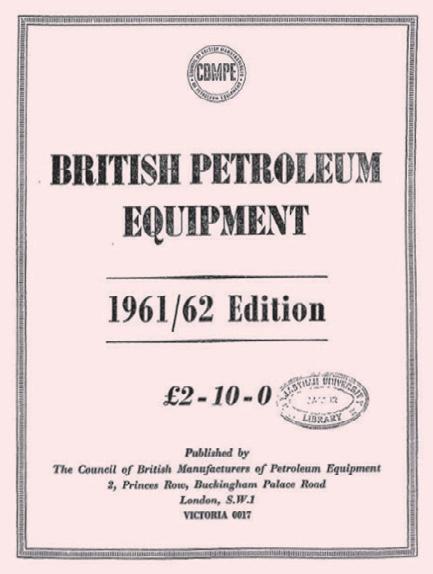
A year before the inaugural procurement guide was released, the first overseas trade mission to the Caribbean was completed, an undertaking that took three months via ship. More international missions followed in the ensuing decade, including journeys to the Netherlands in 1950 and Canada in 1957, inspring inspired EIC’s first Country Report.

Collaboration and cooperation have always been in EIC’s roots. This is no better underlined than by what the council’s Chairman stated as a core value back in 1949: “Make every effort to promote joint working,” he said.
So, how has EIC got to the point where it is celebrating its 80th birthday? The journey has been full of discovery, evolution and growth, and here we will chart just some of the key moments that have come to define EIC’s story to date.
In 1947, long before the days of the internet, the council launched its first ‘Guide to British Petroleum Equipment’, a procurement guide showcasing British engineering and manufacturing prowess to petroleum project decision-makers. This has been ever-present, today’s incarnation being EICSupplyMap –a fully searchable, online database of the detailed capabilities of all 3,500 British energy supply chain
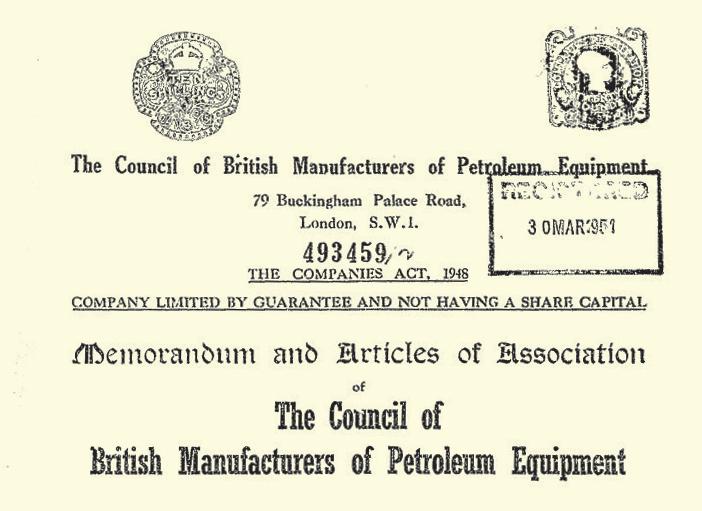
1995
EIC opens its first office outside the UK in Houston, US
(Right) The CBMPE registered with Companies House in 1951. We would only adopt the Energy Industries Council name later, in 1981 1981
CBMPE broadens its member base and activities, renames as the Energy Industries Council



The EIC Projects Database is launched, later being upgraded to EICDataStream
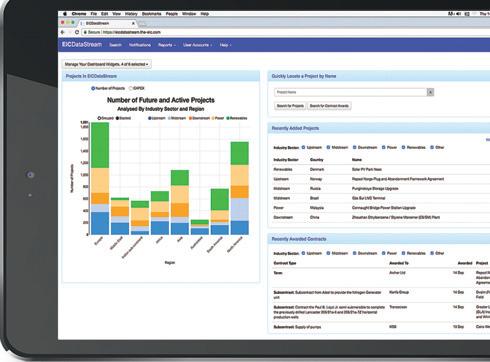




The first EIConnect event is held. EIC Global Energy magazine (now Energy Focus) is launched

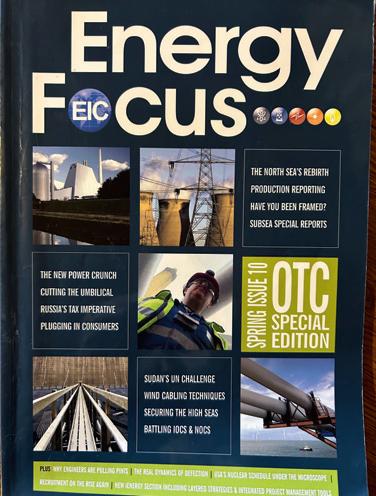

A major commercial milestone arrived in 1959 with the creation of British Oil Equipment Credits, a wholly owned subsidiary of the CBMPE that was designed to unlock international export opportunities for UK plant and equipment manufacturers. This facilitated major deals, including £7 million in orders from Mexico state oil firm Pemex in 1961.
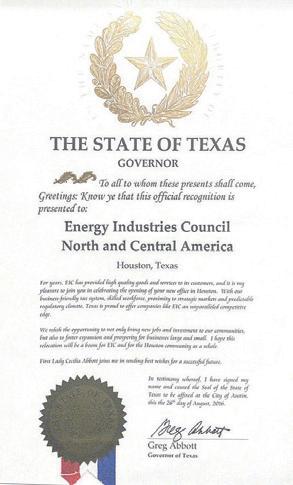
International exhibitions grew in popularity during the 1960s, with the CBMPE attending and exhibiting at numerous international tradeshows and completing landmark missions to
2016
The first edition of EIC’s Survive & Thrive series is launched 2021
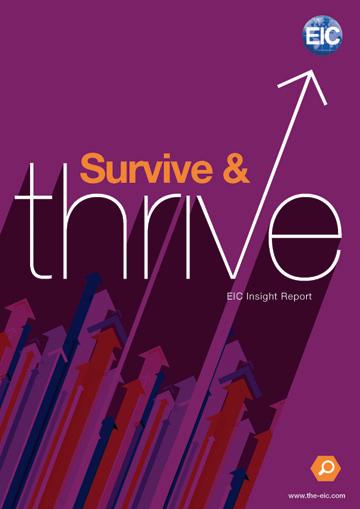
ExxonMobil joins EIC as our first operator member











www.the-eic.com | energy focus 19
2000
2002
EIC at 80: Special Feature EICConnect
2 T D la u E www.the -
markets in the Middle East and Latin America.
Then came EIC’s first serious foray into the North Sea. In 1971, three of its members decided to, in their words, ‘take the plunge’ into the field of servicing and supplying equipment for North Sea operations. The council also arranged for energy giants Shell and bp to talk to member companies about the huge opportunities for British manufacturers in their backyard, later creating a dedicated North Sea Action Committee.

Different name, expanded scope














By 1981, membership had swelled to 250 companies. It was at this point that a major decision was made to realign and rename the CBMPE to Energy Industries Council, or EIC.
The move was symbolic and important. As well as opening a new office in London at Notting Hill Gate, EIC formed the Energy Advisory Committee to widen the scope of its activities and help embrace the entire energy sector.

In 1987, EIC held its first seminar on energy and the environment, covering atmospheric emissions, water pollution, government attitudes, onshore exploitation of energy resources, nuclear energy, and alternative energy. Today, the council remains energy-agnostic and operates with the same purpose, but with an equally if not broader scope across the entire energy ecosystem.
A milestone was met in 1995 with the opening of EIC’s first
international office in Houston, Texas. Meanwhile, to solidify its commitment to the North Sea sector, the organisation opened up its Aberdeen office before the millennium.
The turn of the century marked the launch of another landmark EIC initiative that has gone on to provide insight and highly valuable knowledge to members. The Projects Database, a forerunner of what would become EICDataStream, is a vital CAPEX project tracking which builds on EIC’s rich legacy of communicating up to date, relevant information.
Just two years later, in 2002, the first ever EIConnect event took place in Manchester before the launch of this very publication, which was originally released under the name EIC Energy Global magazine.
Alongside this expansion of information sharing, EIC opened several offices in the 2000s, including in Rio, Dubai and Singapore – all important moves which brought the organisation closer to potential markets for members to grow into.
A decade of modernisation
Recent history, especially the past decade, has seen EIC modernise its offering and make smarter and more effective use of technology to serve its purpose.
In 2015, the third major version of EICDataStream was launched, adding new capabilities, greater depth to project data and a new, simpler user interface. By 2018, this asset had amassed data on
21,000 projects collectively worth US$10tn globally.
In 2017, the council opened up to members its EICAssetMap offering, which today maps 27,500 global facilities across all energy sectors and their associated service opportunities for members. That was followed by EICSupplyMap in 2019. In the same year, EIC welcomed its first non-UK legal entity into its membership in the form of the UAE’s Al-Yaseah, the company now being present on the council’s board. Meanwhile, EIC Connect events were held in Indonesia and the US for the first time.
The context to these more recent EIC developments was the ‘lower for longer’ oil crisis of 2014, which forced all businesses, including EIC, to further automate business models, listen even more closely to clients’ changing needs, and diversify and internationalise wherever possible. Determined to support members through this immensely difficult period, EIC launched its Survive & Thrive initiative. First published in 2016, today it is seen as a critical annual assessment of the successful growth strategies used by energy supply chain leaders to adapt to challenging market conditions.

The next chapter
As we look ahead to 2023, EIC stands taller and stronger than ever, all the while staying true to the same values and purpose that brought 13 companies together during the height of war in 1943.
EIC’s mission statement is clear: ‘To be the go-to energy supply chain trade association, globally’. As market uncertainty still looms large, EIC will continue to play a crucial
facilitating role in the growth, expansion and success of its members, helping them to navigate through choppy waters.

EIC promises continued investment, creativity and absolute professionalism to meet its members’ ever-adapting needs, amplifying the voice of the supply chain, and always promoting the best business opportunities around the world, across all energy sectors.

Special Feature: EIC at 80
(Left) EIC’s first serious North Sea foray came in 1971, when three members started servicing and supplying equipment for operations in the area
(Right) A job advertisement for EIC’s Rio office, opened in 2000. Besides representing EIC in the South American region, Rio is currently a base for nearly 30 staff
20 energy focus | www.the-eic.com
$
21,0
Celebrating 80 years
80 YEARS: THE ENERGY INDUSTRIES COUNCIL
1943: One office in London
2023: International offices in five regions
1943: The EIC is formed by 13 member companies working in the oil and gas industry
800
2023: Over 800 member companies worldwide in all energy sectors
2017: EICAssetMap launched – the only O&M database to map all major UK facilities across all energy sectors
2023: EICAssetMap coverage expanded to Africa, Asia-Pacific, Brazil, Europe and more
2016: Rebranded as Inside Energy, the EIC monthly magazine is now published in a digital format
1947: The first edition of British Petroleum Equipment News comes out. 2023: Now named the Procurement Guide –an interactive digital tool enabling access to supplier and contractor contact details via the EIC website
The EIC
Celebrating 80 years of enabling our members to win work in the global energy industries
2019: EICSupplyMap launched – the only database of all 3,500 British energy supply chain businesses and their detailed capabilities
2023: Ongoing works for expanding EICSupplyMap coverage in Brazil, Texas, Malaysia and the UAE
1957: EIC publishes the Canada Report, its first countryspecific industry report
2023: 12 Insight and Country reports issued each year
1943: 1 UK event
2002: First EIConnect event in London
By 2023: EIC Connect events are held worldwide
2023: 130+ global events; participating in 15+ international exhibitions and EIC flagship event Energy Exports Conference (launched in 2018)
2000: EICDataStream launched, tracking 1,100 ongoing projects
2023: 12,000+ ongoing projects being tracked, worth a cumulative
US$13tn
www.the-eic.com | energy focus 21 From the EIC
The BIG question
Is ‘net zero’ more greenwashing than reality?


Reaching net zero is about more than just balancing carbon emissions; it involves bringing about a transformation in the way businesses of all sizes operate. As the UN calls for a crackdown on greenwashing of net-zero pledges at COP 27, Energy Focus puts the big question to four members
Jonathan Brindley

 Chartered Marketer at JBPRM Ltd
Chartered Marketer at JBPRM Ltd

In simple terms, greenwashing refers to a company advertising itself as being greener and more sustainable than it is in reality.
The purpose of this is to tap into green public sentiment and, in doing so, increase its sales and income.


So, when it comes to net zero and the energy transition, some might say that the energy transition is just a way for big business to make lots of money from infrastructure that we don’t really need. However, climate change is very real and has been proven to be anthropogenic –which means we have a responsibility to reverse it.
Due to the work I do, I am aware of the hard work being expended in trying to build supply chains to enable the adoption of less carbon-intensive power generation, the adoption of carbon capture and storage, and a switch to greener fuels
such as hydrogen for powering energyintensive processes.
From this perspective, is net zero more greenwashing than reality? No way! It’s happening on the ground – maybe I could be bold and say there is not enough ‘shouting’ going on.
JBPRM Ltd is a resultsbased industrial marketing consultancy delivering value-for-money business growth services for start-ups and SME businesses operating within the power, process and energy sectors. The company off ers a complete digital marketing service, as well as a virtual business development office for developing sales funnels quickly and eff ectively.
Andy Howell

EVP Technology at KBC
(a Yokogawa company)
In a word, no – it’s not greenwashing. It is, however, a journey, and one that starts with semantics. Some have interpreted net zero as involving no ‘extra carbon’ being emitted than today, or companies becoming ‘carbon neutral’ from paying fines or offsets. I am afraid that is greenwashing!

For KBC it is more than that. Net zero means that our industry contributes zero towards global warming and does not emit any more produced carbon to the atmosphere than we remove from it.
The journey our industry needs to take will involve reducing emissions from producing, refining and using petroleum products, implementing carbon capture and storage initiatives, and moving to low carbon and then no-carbon fuels.
Net zero is a chemical engineering challenge that will be solved by chemical engineers, and we are well on the way, with
22 energy focus | www.the-eic.com From the EIC Members’ comment
I am aware of the hard work being expended in trying to build supply chains to enable less carbon-intensive power
smart energy reduction, multiple asset heat and energy integration, synthetic methanol from captured CO₂, gas turbine heat integration with ethylene furnaces, biofuels from cooking oils, and the emerging hydrogen and ammonia economy. KBC is passionate about driving sustainable change for the planet and has removed more than 400m tonnes of CO₂ from being emitted.
Define the journey – take the first steps.




KBC , a wholly owned subsidiary of Yokogawa Electric Corporation, is all about excellence in the energy and chemical industry. Fusing technology with talent and best practices, the company makes excellence real for its customers. KBC provides leading software and expert services, powered by the cloud, to assure process operations achieve their full potential.
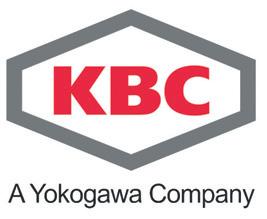
Nick Shorten



COO Asset Solutions at Petrofac

regulatory frameworks is also recognised by governments and key stakeholders around the world.


We’re using the skills we’ve developed in oil and gas to support the development of low-carbon and renewable energy infrastructure. Whether enabling first-of-akind green hydrogen or waste-to-value projects, or delivering close to 4GW of offshore wind power, we’re operating at the cutting edge and at scale.
For us that means good business, in both senses of the word. Superficial changes are easily outed as greenwashing, but fundamental changes at the heart of business strategy deliver real results.
Petrofac is a leading international service provider to the energy industry, helping clients meet the world’s evolving energy needs. Using engineering know-how and project management expertise, Petrofac designs, builds and operates world-class energy facilities that are engineered for safety, optimal efficiency and low emissions. The company has been delivering projects across the renewables sector for more than a decade.
In the corporate world, decarbonisation is now a boardroom imperative, and companies are making commitments to net zero across multiple industries. Despite this, scepticism remains on whether this constitutes actual progress or is just superficial greenwashing.
In my opinion, the commitment is genuine, but the reality is that setting a target is just the first step. The bigger challenge comes in defining how to drive down emissions in the near term and ultimately build a roadmap to net zero that is practical, affordable and achievable.
At Wood, we use our proprietary SCORE advisory tool to help clients on this journey. It helps them break a challenge of this magnitude down into actionable steps and execution plans that can bring their commitments to life. This is key to addressing the cynicism – we are in a world of ‘show me’ rather than ‘tell me’.
Jennifer Richmond Executive President, Strategy & Development at Wood


From a Wood perspective, net zero is a compelling business opportunity. We have a purposeful role to play in helping clients drive real progress around emissions and ultimately help to design a better future. That’s an inspiring mandate that we fully embrace.
Petrofac will be a net-zero business by 2030, with all the difficult real-world choices that implies. We are also working to help decarbonise our customers’ activities and those of our supply chain. Our ongoing contribution to policy development and
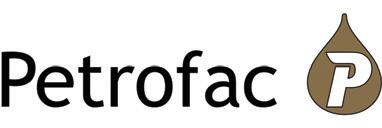
The transition to a net-zero future will be one of the defining challenges of our generation. It’s also a challenge we must meet head on to secure the future of our planet.
Wood is a global leader in consulting and engineering, helping to unlock solutions to critical challenges in energy and materials markets. The company provides consulting, projects and operations solutions in 60 countries, employing around 35,000 people. Wood has world-leading expertise in decarbonisation and works with clients across multiple industries to shape a path towards a lowercarbon future.
For us, the journey towards net zero is a scientific, moral and business imperative. We know it is a long road and needs real commitment. Processes need to change, equipment needs to be retired and replaced, and investment decisions need to be taken. And that means belief and resolve, placing energy transition at the core of our strategy.
Net zero is a chemical engineering challenge that will be solved by chemical engineers
In my opinion, the commitment is genuine, but the reality is that setting a target is just the first step
www.the-eic.com | energy focus 23 Members’ comment: From the EIC
Fundamental changes at the heart of business strategy deliver real results
Advertising feature

What is needed to scale up hydrogen?
Thorsten Harder, Product Manager at Burckhardt Compression, offers his thoughts on what is

decarbonising key industrial processes
energy density in liquid or gaseous form and produces zero emissions at the point of use.



support the integration of renewables into the energy system.

“There is no chicken and egg problem with hydrogen for decarbonising heavy industry,” Harder continues. “When it comes to hydrogen as fuel for heavy vehicles, it is much more challenging. But for industry we have demand, we have a way of producing hydrogen to guarantee supply... we just need to change the way of producing hydrogen to reduce the greenhouse gases that are produced or released. That’s the easiest way to decarbonise quickly.”
A strong energy mix is critical to ensuring the world can meet both energy security and sustainability demands simultaneously.
Technology advances in solar and wind and enhanced efficiencies in more traditional forms of energy generation are contributing to these goals, yet all component parts must continue to evolve if we are to be successful. That, undoubtedly, includes the successful harnessing of new energy sources such as hydrogen.
“Hydrogen today is already used in different industries,” explains Thorsten Harder, Product Manager at Burckhardt Compression – the worldwide market leader for reciprocating compressor systems. “This includes refineries and the chemical industry, gas production for semiconductor manufacturing and, of course, fertiliser production.”
At present, natural gas, coal and oil provide the majority of energy for many such industrial processes that, combined, are responsible for approximately 20% of global emissions.
If used optimally, hydrogen has incredible potential to decarbonise these industries and the transportation sector. Indeed, it is a versatile and clear fuel that can be stored and transported at high
However, the challenge today is that the majority of hydrogen is grey, meaning it has been created from carbon-abated fossil fuels.









According to the European Commission, 96% of hydrogen production is powered by natural gas. Furthermore, the International Energy Agency (IEA) reports that hydrogen production is currently responsible for 830m tonnes of CO2 emissions per year – the equivalent of the annual carbon emissions of the UK and Indonesia combined.
Moving from grey to green
Clearly, at present, hydrogen is not as clean as it can be. So, how can we improve its viability as a sustainable fuel moving forward?
“The easiest way to decarbonise these industries is with greener production processes,” Harder explains. “This is commonly achieved in two ways. One, you use electrolyser-produced green hydrogen, or two, you can try to capture the CO2 coming from the steam methane reformers and store it permanently deep underground (blue hydrogen).”
Indeed, these methods are beginning to gather momentum. The IEA further reveals that in the past two decades, more than 200 projects have started operation to either convert electricity and water into hydrogen to reduce emissions, or


Green hydrogen is key to making hydrogen a more viable energy transition fuel long term, although journeying down this route poses a different challenge.
“Accessing green hydrogen is highly dependent on location and infrastructure,” Harder explains. “If you’re close to the product site, you may only need a small pipeline. However, for distances of a few hundred kilometres or more, it’s more economical to transport compressed gaseous hydrogen by road using trucks and pressurised tube trailers.
“Equally, if you have high-quality hydrogen and the right infrastructure for fuelling, you may want to have liquefied hydrogen, but that requires the availability of liquefied hydrogen and the right fuelling station technology next to it.”
Harder then turns his attention from access to production, outlining similar challenges. “You can produce ‘green’ hydrogen from electrolysers, of course. But it’s difficult when you have limited renewable resources close to the site where you need it. In Switzerland, for example, we don’t have a lot of solar and wind. We may have hydropower, but if you want to extend the capacity on green hydrogen in Switzerland, it’s not so easy.”
There are work arounds available. Pyrolysis technology can be used to convert natural gas into ‘turquoise’ hydrogen without emitting CO2 – yet this is a technology that remains in its infancy.



Of course, these developments are promising, highlighting the increasing

24 energy focus | www.the-eic.com
required to scale up hydrogen so that it may play a greater role in
support of the hydrogen economy in making hydrogen a viable fuel source. However, for Harder, the priority needs to be focused on establishing key production centres that the entire sector can then begin to scale from.
“We’re already using huge amounts of hydrogen at refineries, in ammonia plants, and other industrial applications,” he explains. “Here, you have a constant demand for hydrogen. If you can make that hydrogen green, then you can begin to create desirable hydrogen epicentres in clusters from which the rest of the hydrogen economy may develop.”
Opportunities, barriers and the importance of compression technologies

Several studies are being explored that could see hydrogen clusters become established.
Harder points to promising investigations into producing hydrogen at offshore wind parks with dedicated offshore platforms that are built to accommodate electrolysers and feed into storages. In the Netherlands, for example, Vattenfall has proposed to build the world’s first offshore green hydrogen cluster that would see the integration a 45 MW hydrogen cluster into an offshore wind farm, with three turbines equipped with electrolysers.
“Producing electricity offshore, bringing it onshore and transferring it through high voltage power lines is more costly and less efficient than feeding hydrogen into a pipeline and then using repurposed natural gas pipes,” Harder affirms.
“It’s something I see offshore a lot. Big utility companies, instead of feeding electricity into the grid, they plan big electrolyser stations offshore, pipeline feeds, compressors and then a pipeline to the shore to feed into the natural gas or dedicated hydrogen pipeline grid of Europe.”
Functioning cross-border energy infrastructure such as this will be critical. According to the Hydrogen
Council, approximately 30% of global primary energy supply is currently traded internationally – a need that will persist with the capacity of renewable energy production varying wildly between countries.
Indeed, some countries like the UK are planning to develop a ‘hydrogen backbone’ that would see gas transmission pipelines repurposed to link industrial clusters domestically. However, if an international trade network is to become consolidated, the lack of liquidity in the hydrogen market must be addressed.
“Right now, we only have point-to-point trading between molecule producers and customers,” Harder explains. “There isn’t really a hydrogen market that has been established yet. But for hydrogen to work, we would need to have some sort of free trade and transportation policies of the molecules within key regions. Not only that, but we also need aligned emission regulations and aligned CO2 costs.”
Technologies also need to continue to evolve to make hydrogen more of a commercially viable reality for many – an area where several promising developments are being pursued.
The ongoing improvement of compression technologies stands as a prime example, as Harder explains: “Compression solutions play a very important role. It doesn’t matter which format you want to use hydrogen – from liquefied hydrogen to gaseous hydrogen, you need compressors.
“A major question facing the hydrogen sector currently is surrounding how to scale critical infrastructure, and that debate revolves around deciding which technology fits best for various flows.
Technology choice is critically important, and compressors provide us with that ability to choose.”
A European outlook
Indeed, it is safe to say there are plenty of challenges and opportunities ahead – particularly when looking at the European market.
Owing to areas of dense populations, the expansion of renewable energies into these places is a major social challenge on the continent. For this reason, the World Economic Forum outlines that the region will remain an energy importer, focused on building a strong and interconnected grid infrastructure while also improving its powerful technology position.
Recent moves from Germany show some logic here. Indeed, the country has signed several global agreements as it moves aggressively towards importing hydrogen products, technologies and capabilities from global players including the UAE, India, Japan and Scotland.
Generally speaking, however, there is still a long road ahead in establishing a more effective and expansive hydrogen economy on the continent.












“I think we are at the very beginning,” Harder muses, concluding with his forecasts for the future. “However, we have major subsidies and proven feasibility studies on our side now, and I think we’re poised for lift off – a lot of things are now conceptually worked out.
“If I had to say one thing was key moving forward, it would be improving access to green hydrogen, not only domestically, but equally via a global infrastructure network facilitating crossborder trade. If Europe is to successfully establish a thriving hydrogen economy, this is vital.”
For more information, contact:
Tel: +41522615500
E: info@burckhardtcompression.com
W: www.burckhardtcompression.com
Advertising feature
www.the-eic.com | energy focus 25
Green hydrogen is key to making hydrogen a more viable energy transition fuel
Energy transition starts at home
Consumers will lead this energy transition, and energy providers can light the path, says
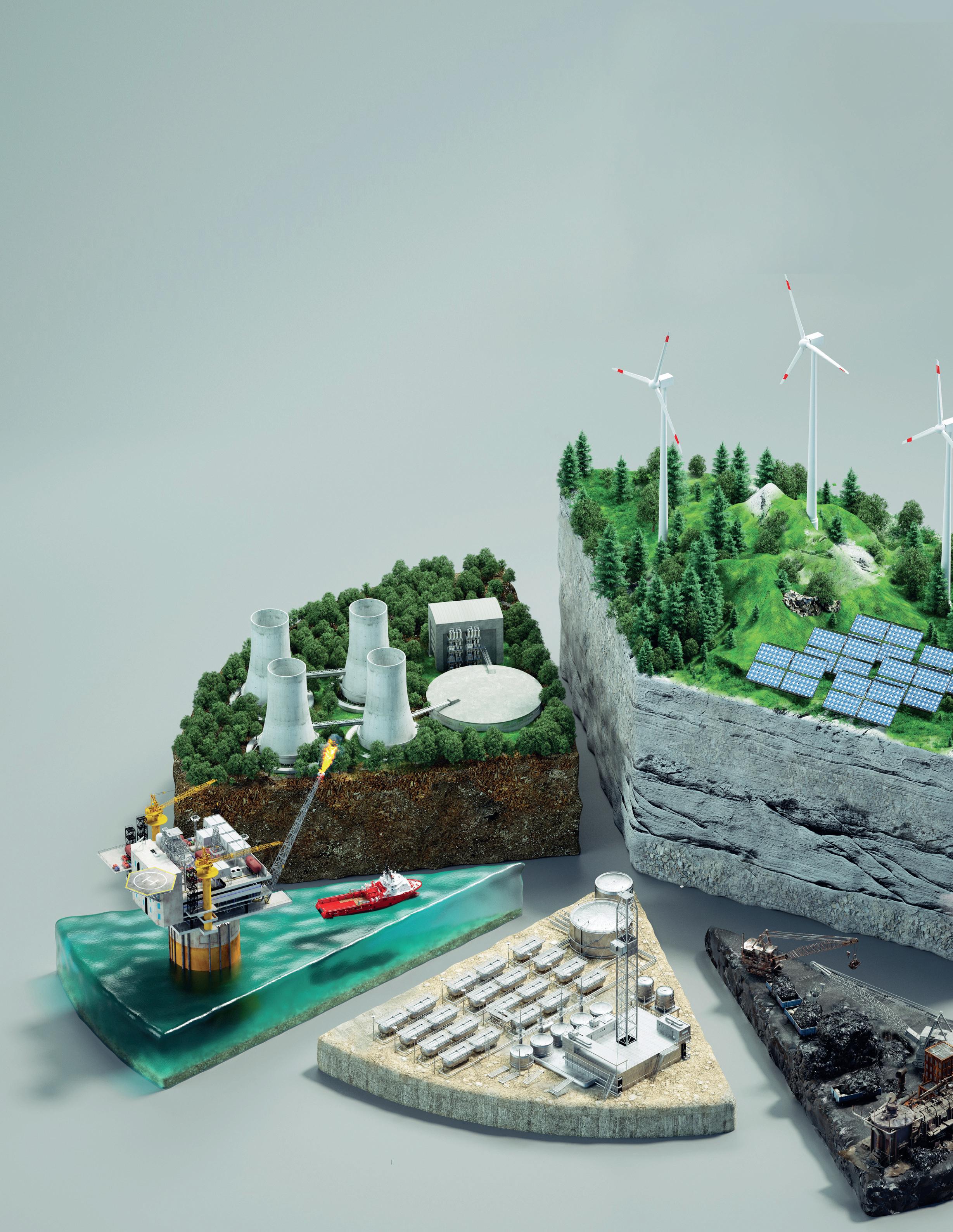
Customer Experience
Transformation Leader
Greg Guthridge
EY Global Energy & Resources
Energy transition Consumer power
26 energy focus | www.the-eic.com
Energy transitions and disruptions are nothing new.
In the 80 years since EIC formed, the way we produce, transport and use energy has evolved dramatically.
The use of coal to drive steam power and thermal power plants, and to heat homes, grew from the 1930s to the 1950s. Oil leapt forward in the 1950s and 1960s as petrol-powered vehicles became more affordable and accessible. The slow expansion of natural gas pipelines through to the early 2000s, and the technological advances since then, have led to significant growth in shale gas during the past 20 years.
These transitions have characteristics in common – they have been relatively slow, more evolutionary than revolutionary, and impacts such as changes in the fuels used to generate energy were either somewhat unseen or felt in only very specific parts of consumers’ lives.
The energy crisis today has multiple dimensions
Now we are in the midst of another leap forward, but this energy transition is markedly different. The pace, scale, innovation and direct impact on consumers are unlike anything we have ever seen. Significant investments in clean energy, new transmission infrastructure and smart distribution networks are well underway, and the timeline for transformation is now just a couple of decades – or even less.
While many speculated that the current energy crisis in some nations would slow investment and create backsliding, the opposite appears to be true. The International Energy Agency’s forecast in its World Energy Outlook 2022 report shows demand for every fossil fuel peaking or plateauing during the next decade.
Omnisumers are on the rise as consumer confidence wanes

However, the most significant difference in this transition is the central role of consumers. In the coming years, the energy transition will hit home. Infrastructure such as wind farms and transmission lines will increasingly appear, solar

panels will dominate the rooftops, more electric cars and bikes will be in garages, and new digital technologies will be installed in homes. And consumers will face an exponential increase in opportunities to shift their energy use and take advantage of greater choice, convenience and control, while also enhancing system flexibility and resilience. What it means to be an energy consumer is fundamentally changing, and we see the emergence of a new, more active and engaged energy omnisumer – a person or business that participates in a dynamic energy ecosystem across multiple places, solutions and providers.
The EY Energy transition consumer insights research of 70,000 consumers in 18 markets during the past two years found that they are not just ready for this change – they are leading the way. Rising prices and market disruption have fueled their interest in clean energy and in adopting new solutions such as electric vehicles and rooftop solar.
At the same time, volatility has taken a toll on consumer confidence in an industry that has been taken for granted for years. Since 2021, more than 80 energy providers have gone out of business in competitive markets and, across the world, US$550bn has been spent on government intervention to support consumers and providers. For consumers, this has raised concerns about affordability and equity, and caused them to question what their future energy experience will look like.
Reinventing the energy experience
For energy providers and industry stakeholders, this is an urgent call to action. Energy consumers are accelerating their transition to the future, and now is the time to keep pace or risk being left behind. The key to success is to put consumers at the centre of the energy transition. And the place to start is by reinventing the energy experience.
EY’s survey results reveal that a key opportunity for providers to improve the consumer experience lies in new energy products and services. Consumer interest in a variety of new energy solutions – including renewable energy, rooftop
www.the-eic.com | energy focus 27
Consumer power: Energy transition
IMAGE: GETTY
We are in the midst of another leap forward, but this energy transition is markedly different. The pace, scale, innovation and direct impact on consumers are unlike anything we have ever seen
solar, energy-efficient appliances, heat pumps, electric vehicles and charging – is growing. However, only 28% of consumers who were involved in a new energy product or service experience with their energy provider during the past year were highly satisfied. The problem is that adopting just one new product often requires consumers to deal with multiple parties, including a retail store or speciality provider to purchase it, a contractor or other organisation to install it, and government departments or energy providers to provide construction permits, process rebates or inspections.
This tedious, frustrating experience threatens to slow down the adoption of new energy products, and the energy transition itself – but providers can turn it around. Of consumers, 81% want their energy provider to play a role in their new energy product and service experience. This gives providers the opportunity to develop an omniexperience supported by a much deeper understanding of consumers, orchestrating a complex ecosystem and providing digital tools and channels of interaction that rival the likes of Amazon and Google.
Preparing for a consumercentred energy future



Are energy providers up to the task of engaging and inspiring consumers to accelerate a better future for all of us? We believe so – if they invest now. A focus on six no-regrets strategic imperatives today will create the building blocks for tomorrow.

Effortless engagement – reshape the energy experience by designing and delivering seamless journeys that span multiple energy providers, products and channels. Operational agility – create an internal culture of agility that is flexible and responsive to the inevitable surprises ahead. Build the ability to embrace challenges and capture opportunities at speed. Digital enablement – enable employees, partners, and consumers alike with intelligent digital platforms and tools that improve satisfaction and value. Adaptive workforce – engage and empower the energy workforce of the future with new operating models that recognise that the employee experience and customer experience go hand in hand.
the world’s energy mix evolved?
1859 Edwin Drake struck oil in Pennsylvania, establishing America’s first commercially viable oil well
1964 Oil consumption boomed with the post-war motor industry and became the world’s largest energy source in 1964.
Innovative growth – create an innovation engine to monitor, test, learn and scale new opportunities that appeal to the emerging needs of increasingly diverse and demanding energy consumers. Sustainable enterprise – walk the talk around sustainability by turning the focus inward to the culture, operations and broader ESG focus to create value for consumers, communities and the organisation.
The truth is, if we could go back 80 years and time-travel the founders of EIC to today, they would largely recognise our energy system’s structures and operations. Eighty years from now, that is not going to be the case. The future holds abundant clean energy, mass electrification, diversification of energy sources and storage, and mass adoption of distributed energy resources. But more than anything, this transition will put consumers at the centre of a new energy world.
By Greg Guthridge, EY Global Energy & Resources Customer Experience Transformation Leader
2022 Coal, oil and natural gas remain primary global energy sources – around 80% of the energy system – even as renewables rapidly increase

1980s Shift from coal to gas for heating, and to nuclear and hydro for electricity
Consumer is key
1930 Coal replaced wood as the main source of energy, fuelling the expansion of industry and the urban population
Unlike previous transitions driven by economic or technological advantages, the renewable energy transition is driven by policy. But simply adding generation capacity is not enough; we will need to change the energy foundations of what today is a US$100tn global economy. The shift to low-carbon sources by 2050 will require massive investments in natural resources, infrastructure and grid storage – and changes in our energy consumption habits.
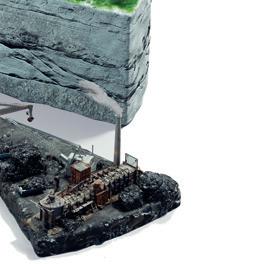
SOURCE: OUR WORLD IN DATA BASED ON VACLAV SMIL (2017) AND BP STATISTICAL REVIEW OF WORLD ENERGY – OURWORLDINDATA.ORG/ENERGY CC BY;
CAPITALIST Energy transition: Consumer power
VISUAL
28 energy focus | www.the-eic.com
160,000 TWh 140,000 TWh 120,000 TWh 100,000 TWh 80,000 TWh 60,000 TWh 40,000 TWh 20,000 TWh 0 TWh 1850 18002021 19001950 Oil Coal Traditional biomass Natural Gas Nuclear Hydropower Wind Solar Modern biofuels Other renewables
has
Global primary energy consumption by source 1800–2021 Pre-1800 Until the Industrial Revolution, nearly all sources of energy were from renewables (traditional biomass: wood, peat and dung)
How
Terawatt-hous (TWh)
VISIT


THE



services
“Richest gathering of industry experts I have experienced”
Peter Davies, EM&I
If you are interested in one of our sponsorship opportunities, or to book, get in touch with a member of the team today! Email internationaltrade@the-eic.com






Energy Exports Conference 2023 P&J Live Aberdeen I 6 – 7 June 2023 www.the-eic.com/EEC2023 SPONSORHIP OPPORTUNITIES AND BOOKING NOW AVAILABLE
Energy Exports
a
to:
The
Conference provides
unique opportunity for companies like yours
CONTACT US
“A truly global smorgasbord of opportunities to engage and indulge with key players in traditional and future markets” Mark Light, UnitBirwelco EIC WEBSITE
TO FIND OUT MORE
US
The US is primed for carbon capture with its extensive history and expertise in the sector, driven primarily by the enhanced oil recovery industry. Other market drivers include enhanced climate change policies, returning to the Paris Agreement, the 45Q tax Credit and the newly announced Inflation Reduction Act.

There is a demand for manufactured products and fuels with lower carbon footprints, which is further accelerating carbon capture deployment in hard-to-abate sectors, such as cement and steel. Several pilot and commercial projects have been announced, initiated by the cement industry in response to the demand forecast.
UK
The UK has the potential to be an early mover into the carbon capture market with the significant progress it is making in the sector.
Since 2020, the UK government has released several reports and funding schemes to help drive the market. The Energy Security Bill 2022 sets to capture 20–30 MtCO2 by 2030, alongside a £1bn investment and several planned business models to support the market.
The UK is looking to have four low-carbon industrial clusters by 2030 and at least one net-zero cluster by 2040. The government announced a cluster sequencing competition to identify and sequence clusters that are suitable for deployment in the mid-2020s. The HyNet

As well as the decarbonisation of heavy industry, interest is growing in the role of carbon capture in low-carbon liquefied natural gas (LNG). Most notably, NextDecade is looking to integrate CCS into its planned Rio Grande LNG project in Texas to decarbonise its LNG supply chain.
ExxonMobil is developing The Houston Ship Channel CCS Innovation, which will look to store up to 100 million tonnes of CO2 (MtCO2) per year by 2040 from nearby industrial emitters. Investment in the project is estimated at around US$100bn.
With demand and capability, the US is set to take a big bite of the estimated US$4tn (by 2050) carbon capture market.
Five countries leading the way
in carbon capture and storage


North West cluster and the East Coast Cluster (ECC) were chosen as Track-1, with Acorn as a reserve. The recent Growth Strategy will look to accelerate the HyNet and ECC.
Zero Carbon Humber, part of ECC, will look to capture carbon from power and petrochemical facilities, beginning with VPI Immingham’s CHP plant and the Phillips 66 Refinery as blueprints.
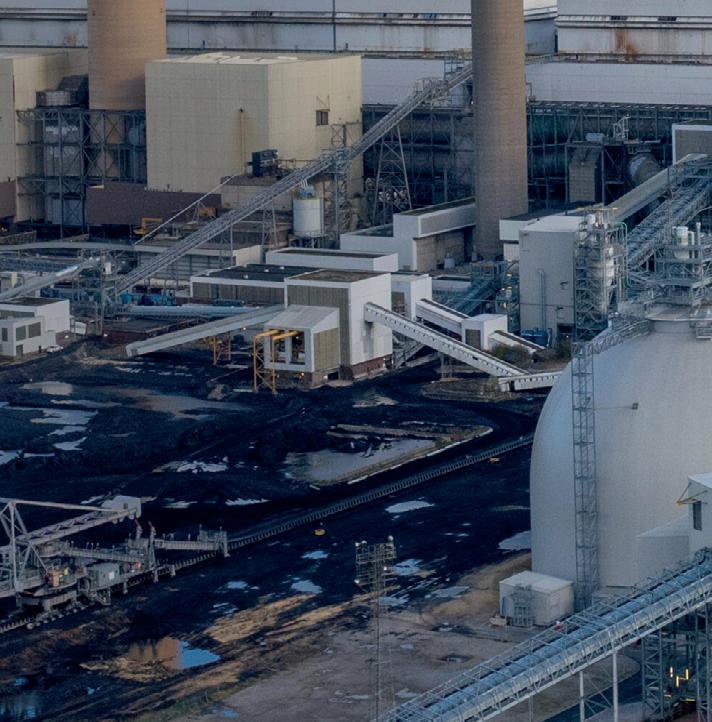


The HyNet cluster currently consists of three main developments. Captured carbon would be transported for storage in depleted gas fields in Liverpool Bay, which Eni currently owns. A blue hydrogen plant is planned for Essar Oil’s Stanlow Refinery, with Johnson Matthey as the technology provider. The third development is a hydrogen pipeline led by Progressive Energy.

30 energy focus | www.the-eic.com
CCS US$32.bnCCUS US$0.2bn Total CAPEX US$32.4bn CCS US$120bnCCUS US$1.4bn Total CAPEX US$121.4bn Energy Transition CCS
Increased investment by governments, including funding of technology development, means increased opportunities for the supply chain. EIC energy analyst, Joanne Sivanathan, looks at five countries currently leading the way in carbon capture and storage
The momentum behind carbon capture and storage (CCS) continues to build, with more than 100 carbon capture, utilisation and storage (CCUS) developments having been announced since 2020.

The US leads the way in terms of the number of projects, followed by the UK, Australia, Norway, the Netherlands and Indonesia. While some of these projects, particularly in Europe, are linked to the decarbonisation of industry, the EIC is seeing projects announced in the ASEAN region linked to gas field developments with high CO2 content.
Investment in developments due to start-up between now and 2026 is estimated to be US$48bn globally; however, investment levels are expected to increase significantly if CO2 reduction targets are to be hit.
By Joanne Sivanathan, Energy Analyst, EIC


Norway
Norway’s Northern Lights project involves capture from industrial sources, transport and permanent storage, with capacity to store up to 1.5 MtCO2 in its first phase. The country is encouraging other countries and developments to store emissions at the site. Cory is developing a CCUS facility in London and has signed a memorandum of understanding with Northern Lights to use the resource.
This development is championing a collaborative approach and could deliver major industry knowledge. Producing
Australia

The project pipeline, set to start by 2030, has more than 27m tonnes per year of commercial CCS capacity. CCS is being deployed as part of larger projects such as blue hydrogen, but targeted policies and funding opportunities are lacking. The government offers some support; CCUS projects can now earn one carbon credit for every
What needs to happen now?
EIC’s project tracking database, EICDataStream, shows that many of the projects are in the feasibility stage or awaiting a final investment decision; it is therefore imperative to reduce delays in reaching operations to meet the planned mid-to-late-2020 start-up dates. Government policy and financial support will be key enablers for the industry to take off, but it is also crucial that the wider industry collaborates and share learnings from first-of-a-kind developments to reduce the costs associated with the industry.
Indonesia
The carbon capture market is in its early stages, but R&D is being carried out to aid deployment. A task force will help draft and deploy CCUS regulations, and a carbon pricing scheme will soon be announced. The mechanism would set up a legal framework for
first-of-a-kind projects and technology lets the industry gain lessons that will help the market grow and develop projects more quickly and efficiently.
Norway’s government is covering around two-thirds of the development’s first phase costs. While policy and regulation may be lacking, the faith and drive to commercialise large-scale CCUS is prevalent in the country.
Norway’s 2050 low-emission strategy highlights carbon capture for industry decarbonisation –and turning its CCS expertise and capacity for large-scale offshore storage into a new industry is high on its agenda.
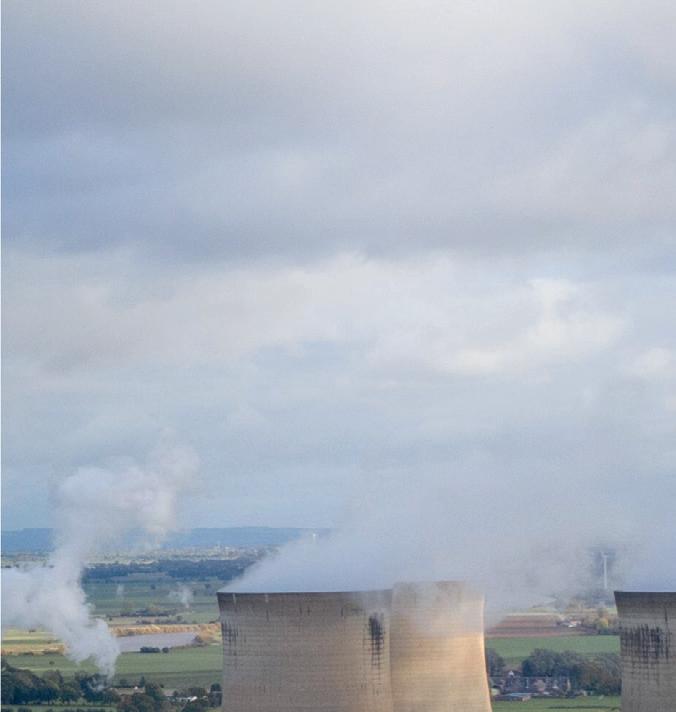

tonne of CO2 sequestered and gain government backing to develop CCUS facilities and hubs. bp, Woodside Energy and Santos are investing heavily in large-scale projects – Santos leads the way with a 25% share of proposed CCS projects.
Australia is presenting itself as an open market for carbon capture projects, having collaborations with Singapore, Germany, South Korea and others.
carbon pricing and trading, and will work alongside the carbon tax on coal-fired power plants.
The government is preparing regulation to encourage CCUS infrastructure, and there is also private investment, with companies such as Pertamina looking to test carbon injection for storage underground.
(Below) Panorama view of Drax Power Station, showing biomass storage tanks and carbon capture
www.the-eic.com | energy focus 31
SOURCE: EICDATASTREAM CAPEX FIGURES (28 NOVEMBER 2022) IMAGE: ALAMY
CCS US$0.9bnCCUS US$3.3bn Total CAPEX US$4.2bn CCS:
Transition CCS US$3bnCCUS US$0.1bn Total CAPEX US$3.1bn CCS US$3bnCCUS US$8.07bn Total CAPEX US$8.07bn
Energy
Economically Viable Emissions Reduction Opportunities in One Tool



















Kent’s Carbon Intensity Reduction Tool has the capability to quickly and quantitively assess a significant number of emission reduction opportunities rooted in process engineering and focusing on the life of field production profile, bringing a balanced approach to emissions reduction. By investigating a range of emission reduction opportunities, incremental reductions in emissions can be achieved in the short and medium-term, whilst identifying the best long term strategy to achieve Net Zero targets.
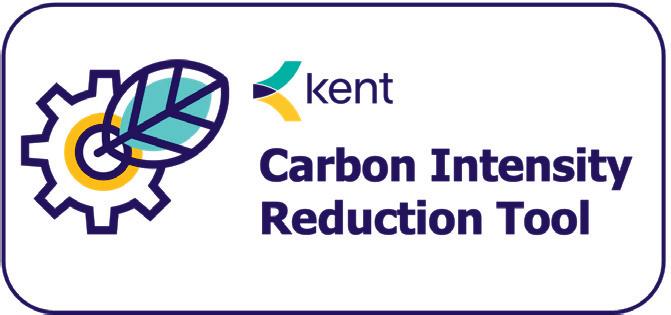
This is a targeted technology, integrated with our in-house capacity modelling tool, MeasCap, and industry standard steady state process modelling software. The technology allows us to theoretically test and evaluate the impact that operational and/or physical modifications to a process could







have on an asset’s greenhouse gas emissions over time and for full life of field. It considers the emissions associated with routine and nonroutine flaring, power generation and any other gas turbine installed on the facilities. We can quantitatively evaluate a range of modification options, to identify those that are most effective in reducing a client’s emissions whilst considering the impact that these modifications may have on operational expenditure, process downtime and export revenues.

In just one example, the tool has recently been used to support a client in developing an emissions reduction action plan for their asset’s remaining field life, to ensure they are compliant with the North Sea Transition Authority’s Stewardship Expectations. The tool has been used to develop a roadmap of the modifications required to achieve their Net Zero targets, with a cumulative reduction of 37,000 tonnes of CO2 emitted by 2027 and an overall saving of up to 510,000 tonnes of CO2 over the remaining field life.

Award Winning Net-Zero Technology
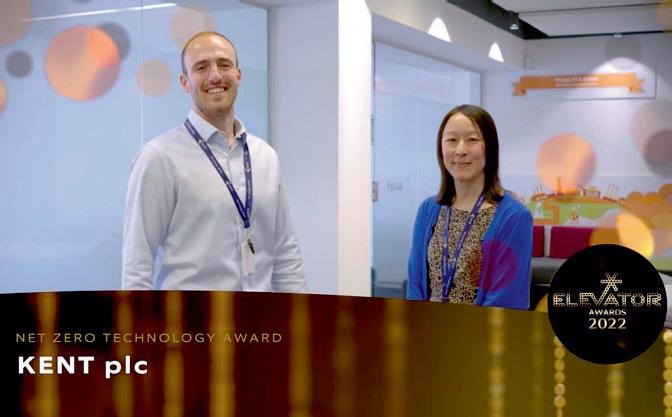


The Carbon Intensity Reduction Tool has been independently identified as an innovative and valuable net zero technology by the Net Zero Technology Centre, through the Elevator Awards, and was developed by our teams in response to demand from the market. Each asset operates differently and has specifics in terms of energy consumption and economics. The comprehensive approach deployed by using this all-in-one innovative package ensures that the optimum solution is identified and selected in the early development phases, which reduces project risks down the line.
 The core challenge facing oil and gas operators today is how to reduce their greenhouse gas emissions, to meet the applicable regulatory requirements, without those emission reductions being overshadowed by excessive capital expenditure requirements. Imagine a quick and efficient tool that quantifies the impacts of emissions reduction opportunities and combines these into economically viable emissions reduction action plans.
The core challenge facing oil and gas operators today is how to reduce their greenhouse gas emissions, to meet the applicable regulatory requirements, without those emission reductions being overshadowed by excessive capital expenditure requirements. Imagine a quick and efficient tool that quantifies the impacts of emissions reduction opportunities and combines these into economically viable emissions reduction action plans.
Our Carbon Intensity Reduction package includes three key stages:
OPTIONEERINGREPORTING
Carbon Impact Assessment to quantify all emission sources and rates during normal operation.
Production Efficiency Assessment to estimate key contributory areas to plant downtime and risks for non-routine flaring events.
Energy Efficiency Assessment to identify areas with low energy efficiency and therefore opportunities for right sizing to improve system performance.
The technology is fully automated and therefore allows a number of scenarios to be assessed quickly. A capacity model is built for the topsides using our software MeasCap, which includes an automatic link to the process simulator. It reverts equipment utilisation, power demand and throughput and can run several production scenarios in parallel.
The technology has a number of calculation tools embedded
Potential options are identified via a structured methodology which is based on the ASSESS phase.
Economic analysis quantifies benefits in terms of carbon credit reduction, initial investments, impact to production and each solution.
in a single package to provide a comprehensive assessment not only on carbon balance, but also identifies areas with potential for emissions optimisation. The assessment can be performed on various production scenarios, to determine differences in opportunities for various drilling programs. It also provides an overview over field life and identifies optimum timing for any changes to take place.
Provides a clear outcome of system performance and energy consumption over field life.
Identifies areas of focus for improvements.
Provides a full list of solutions with quantification of benefits vs investment. Performs a comparison of each solution to support options screening process and decision making.

Our innovative tool is specifically built to perform all necessary assessments and evaluations, and provides a start-to-end package for early screening phases. The automation of calculations saves significant calculation time compared to a traditional step by step approach and provides a more robust solution to typical standalone brainstorming workshops which can have insufficient background for projects to be sanctioned.
Core advantages of utilising our one-of-a-kind Carbon Intensity Reduction Tool include:
ROBUST
Solutions identified are based on a rigorous and systemic evaluation, with quantification of benefits and investments for each solution proposed; ensuring all solutions
FLEXIBLE
The package applies to all sorts of topsides processes, is flexible and easily adaptable to changes to the asset (e.g.
HOLISTIC
Calculation automation allows to run multiple cases in parallel to provide an overview over field life of benefits in terms of emission reduction rather than focusing on peak production year only.
QUICK
The automation inside a single package allows a quicker evaluation compared to a traditional approach.
DEEPER ANALYSIS
Reviews a range of parameters, not just direct carbon emissions reduction to ensure the optimum solution is identified.
REDUCED PROJECT RISKS
The rigourous optioneering provides the necessary parametric for the right solution to be proposed which reduces project risks and potential rework.
ASSESS
Connect with Kent: https://bit.ly/KentDecarbonisation
The Morocco-UK Power Project is an opportunity for Britain to meet 8% of its annual electricity demand by the end of this decade by harnessing the abundant solar and wind resource of North Africa and delivering it directly to the British grid.
Xlinks’ investment will not only create a huge economic dividend on both sides, but also catalyse a whole new domestic cable manufacturing industry to service the expanding global offshore wind and interconnection markets, bringing high-value jobs, skills and supply chain growth across regions.
Zero-carbon collaboration

The privately-financed clean energy project draws on strong trading links and Morocco’s world-leading experience in large and innovative energy infrastructure. Blessed with sunshine and trade winds – with more than twice the UK’s solar resource, and a higher wind resource – Morocco is targeting 52% of power generation from renewables by 2030, and also wants to
Massive connector offers UK energy crisis lifeline
become an international hub for pricecompetitive and carbon-free energy, making it the ideal partner for Xlinks.
Capturing Saharan sun and wind

Located in the Guelmim-Oued Noun region in south Morocco, 10.5GW of solar and wind generation will sit alongside 20GWh/5GW of battery storage. Solar panels, tracking east to west, will generate three times the power that they would generate in the UK, and five times more from January to March. And with trade winds rising in the evening, one hour ahead of the UK, supply will match demand.
The world’s longest subsea electricity cable system will stretch 3,800km along the coastlines of Morocco, Spain, Portugal and France to connect the project to the British grid in Devon, under a 3.6GW agreement with National Grid. That is power for more than 7m British homes for an average of 20+ hours a day.



Proven technologies and expertise
Building a project on this scale is not without its challenges. Our expert team is minimising risk by using tried and tested technologies that are already operating in a safely and cost-effective way around the world. As in the 720km UK–Norway North Sea Link, high-voltage direct current (HVDC) technology will allow the efficient transfer of electricity over long distances. Twin 1.8GW cable systems will follow a shallow water route optimised for minimum length at a maximum depth and for the geology and environment. Cables
34 energy focus | www.the-eic.com Renewables Morocco-UK power project
In the middle of an energy crisis, how do we stay on track to achieve critical decarbonisation targets in an affordable and secure way for consumers? And what if, in the process, we could create a new manufacturing industry, global supply chain and green jobs bonanza? Xlinks’ Morocco–UK Power Project is part of the solution, says CEO Simon Morrish
will be buried under the seabed at a water depth of 100–250m, sometimes reaching 700m, to avoid damage by fishing vessels.

New jobs and an export-led manufacturing industry
In Morocco, an estimated 10,000 jobs will be created – 2,000 permanently –through local components manufacturing and civil engineering. In the UK, the project will launch a high-growth HVDC cable industry and supply chain, initially supporting the creation of 1,350 highvalue UK manufacturing jobs by 2024. We are already building the capacity, with consent granted for a factory in Hunterston and another factory planned.
We are also committed to building skills: our partner XLCC is working with North Ayrshire colleges on new courses for local students to train as HVDC jointers.
COP27 has renewed the focus on carbon reduction and a just energy transition. Xlinks’ UK–Morocco Power Project is already on track to deliver cheap, reliable and decarbonised power to the UK, but is also an exciting crossborder collaboration that can catalyse a cable industry and a supply chain that will be a critical enabler for global net zero.
By Simon Morrish, CEO,

Plugging the UK into Morocco’s sun and wind
The world’s longest subsea electricity cable system stretching 3,800km to deliver renewable energy from Morocco to the UK


10.5GW of solar and wind power generated in Morocco
Delivering 3.6GW of reliable energy to the UK for an average of 20+ hours a day
More than 7m British homes provided with low-cost, clean power by 2030 – equating to 8% of the UK’s electricity needs
10, 000 jobs createdin Morocco, including 2,000 permanent jobs
1,350 high-value manufacturing jobs created in the UK by 2024
www.the-eic.com | energy focus 35
Xlinks
(Below) 3D rendering of submarine cable installation
Morocco-UK power project: Renewables
Climate change is the biggest challenge of our time, and Wintershall Dea supports the global goals to reduce emissions without any reservations. We need to switch to climate-neutral energy as quickly as possible.

However, the security of the energy supply must also be guaranteed. It is not yet possible to meet all of the world’s needs with renewable energies, so we will need other solutions for a transitional period.
Gas-fired power plants emit 65% less CO2 than coal-fired power plants. Natural gas offers another key advantage, as it will facilitate a rapid transition to the hydrogen economy.
The fact is that renewable hydrogen –meaning hydrogen produced using renewables – will not be available in sufficient quantities in the foreseeable future. However, low-carbon hydrogen – meaning hydrogen produced using natural gas combined with the capture and underground, offshore storage of
the CO2 – can fill this gap. It will significantly reduce CO2 emissions and be available soon.
Solving hydrogen’s chicken-or-egg dilemma
The establishment of a hydrogen market faces a chicken-or-egg problem: no one will build infrastructure or convert their plants as long as there is too little renewable hydrogen, but no one will produce renewable hydrogen as long as there is no infrastructure for it.
The gas industry can already build hydrogen infrastructure that initially produces, transports and trades lowcarbon hydrogen, and will also be able to seamlessly integrate renewable hydrogen at any time. In this way, the fossil-based natural gas will solve the chicken-or-egg problem.
Policy needed to unleash potential
However, natural gas will only be able to play this role if the political framework conditions are right. And this means that
Europe must seize this opportunity to quickly create an EU-wide market for hydrogen. A European ‘hydrogen union’ could unleash the transformative potential that lies in natural gas. The demand triggered by this would result in economies of scale, trigger massive investments and noticeably accelerate the transition to a climate-neutral hydrogen economy.
The US is currently showing how this can be achieved. With its Inflation Reduction Act, the US intends to promote climate-friendly energies on a large scale. Hydrogen is eligible for tax incentives as long as it is climateneutral – regardless of whether it was produced using renewable energies or natural gas plus carbon capture and storage (CCS). This makes it easier for companies to hop on board to tomorrow’s hydrogen economy.
An industry that is ready
The gas industry stands ready to help transform the energy system to the best of its ability. Wintershall Dea is a good
Is gas the new gree n fuel?
COO
36 energy focus | www.the-eic.com Oil and gas Greener energy
At first glance, it may seem like an odd question. But the seeming contradiction quickly vanishes on closer inspection – because natural gas actually can be used today to rapidly reduce CO2 emissions and serve as a bridge to the hydrogen age, says Wintershall Dea
Dawn Summers
example of what this transition could look like: ideally positioned at the interface of the fossil and renewableenergy supplies, we aim to be the architect for the decarbonisation of the energy industry – indeed, this is an integral part of our strategy. Our diverse range of carbon management and hydrogen activities aim to save between 20 and 30m tonnes of CO2 per year by 2040.
With the BlueHyNow project, Wintershall Dea plans to make a significant contribution to the ramping up of the German hydrogen market. The resulting CO2 is planned to be sequestered in offshore storage sites in the North Sea.
In the Danish North Sea, a large CO2 storage facility is being built under the seabed in a depleted oil reservoir. Wintershall Dea is a partner of the CCS consortium in the Greensand project. The first batches of CO2 are planned to be stored there under scientific supervision at the beginning of 2023. We also have a CCS licence in Norway.
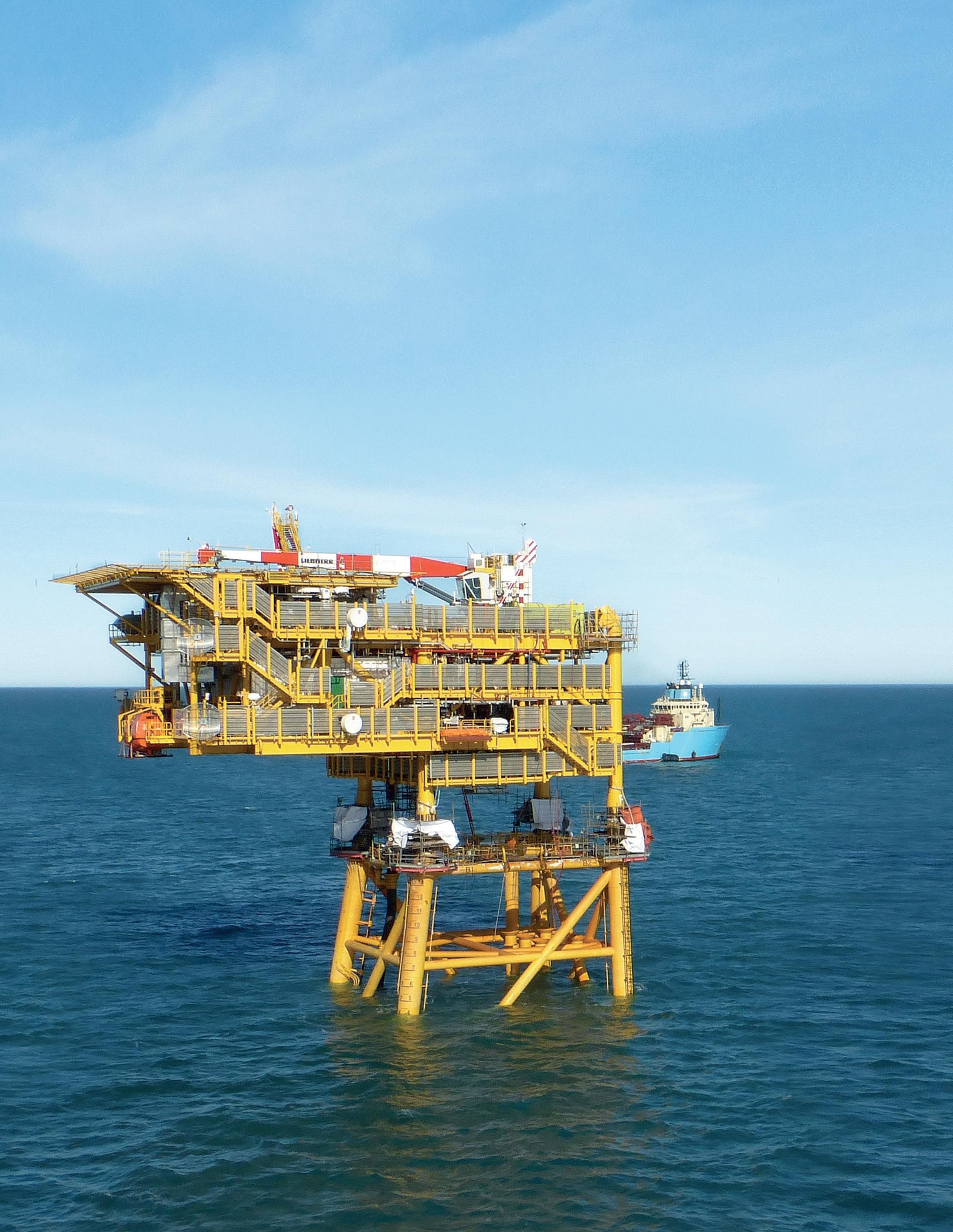
These examples show that we have the know-how needed to push hydrogen and CCS projects forward. Our energy carrier of choice is gas, as it will reduce emissions in the short term and pave the way for renewable hydrogen.
In the near term, there is no other available alternative that can perform this role. A fossil energy source can therefore not be ‘greener’.
 By Dawn Summers, Chief Operating Officer, Wintershall Dea and President, GasNaturally
By Dawn Summers, Chief Operating Officer, Wintershall Dea and President, GasNaturally








and
The gas industry stands ready to help transform the energy system to the best of its ability
Greener energy: Oil
gas
www.the-eic.com | energy focus 37
(Below) For more than four decades, offshore gas production in Tierra del Fuego has been a solid foothold for Argentina’s energy supply. One of the country’s top five producers of natural gas, Wintershall Dea plans to further strengthen its focus on gas and to support Argentina as a partner in the energy transition
Overhauling Europe’s energy system


Europe’s energy markets are stressed as never before. Prices are high and volatile, and EU citizens are calling for huge interventions.
The roots of this problem remain contentious. One point of view is that the markets are working correctly: that high prices are the result of physical constraints in gas supply and infrastructure, and are sending the right price signal to reduce demand and boost investment. However, with citizens falling into energy poverty and EU industries mothballing or even closing facilities (for example, until a slight dip in prices, ammonia production was operating at just 30% capacity), there is a huge political push to add stability and moderation to energy markets.
Delivering a future-proof design
In the context of extreme market conditions, an overhaul is tempting. One radical proposal posited by the European Commission would split Europe’s electricity markets in two. One ‘market’ would exist for renewables, with contracts for



38 energy focus | www.the-eic.com Power Electricity market reform
The EU Commission has plans for a ‘deep and comprehensive’ reform of the electricity market to fix Europe’s energy crisis and make it fit for a decarbonised future. The market proposals may yield results, but it is impossible to say, writes
Cillian Totterdell at FleishmanHillard
difference (CfD) guaranteeing revenues over a period of years (M-RES), and another more conventional market would exist for thermal generation to fill the gaps in variable energy sources such as wind and solar (M-FLEX).
Other policy options are also no doubt under consideration, which may alter the landscape even more radically. However, history is clear that caution is a virtue in the world of energy policymaking, and any market changes must be clearly and calmly thought through.
Adapting to a new reality
First, we must take a step back and set clear objectives. In June 2022, Ursula von der Leyen, president of the European Commission, surprised many (including others in the Commission) when she told the European Parliament that the marginal pricing model, which structures current markets, must end. However, such an action must be viewed only as a tool to achieve an objective – not an end in and of itself.
This may seem self-evident, but consider the multiple priorities facing policymakers today, some of which overlap and some of which compete. They must lower prices for consumers, lower prices for industries, reduce overall market volatility, maximise the deployment of renewables, increase Europe’s energy security, deliver energy efficiency, generate capital investment, innovate in new solutions such as flexibility, significantly strengthen interconnections and the single electricity market, and deliver all of this (plus much more) quickly. The marginal pricing model is a big factor in these conversations; however, it touches on each of them differently and is not the silver bullet for all.
Will a split market work?
As an example, let us consider the two-market approach against these objectives. If M-RES collects all fixed-price generation it could lower prices for consumers. However, it could also hollow out the market for power-purchase agreements, undermining a key pillar of many corporate energy and decarbonisation strategies. M-FLEX may lead to an efficient market that balances the needs of M-RES, but integrating new technologies such as energy storage may require policy and financial supports here, too, altering the purely economic approach envisioned.

On market integration, discussions about the application of a gas price cap at the European level have demonstrated the enormous challenges of finding a cohesive approach in a fragmented landscape; applying the two-market model would require a deeper level of cooperation and integration than
governments have, to date, shown support for.
Investment is another area in which priorities compete. Right now, investment is not a challenge in the renewable space –bottlenecks exist primarily in the form of grid connection and permitting. Nonetheless, with higher costs of borrowing emerging from the macroeconomic situation, the de-risking involved in moving for CfD could ease capital flows. At the same time, the value of the CfD itself, especially versus the market cost, will inevitably mean lower aggregate revenues for renewable technologies (if not, why are we doing it?). This may mean less profit for rich companies, or less investment in critical low-carbon generation. Without a solid evidence base and a credible consultation process, it is simply impossible to predict these impacts.
Reforms cannot be rushed
If the European Commission is serious about overhauling Europe’s markets, it must abide by the regular policy process in which options can be assessed against a clear set of objectives. This is likely to be slow, and indeed painful, but the market design set today will last for decades.
Furthermore, it is crucial that stakeholders, experts, regulators and the actors tasked with implementing this new system are given time to submit considered feedback. An extra year of process could mean a design that shaves multiple years off our three-decade decarbonisation trajectory – what is critical is to get it right, even if the political pressure is immense right now.
By Cillian Totterdell, Climate and Energy Policy Lead, FleishmanHillard
IMAGE: GETTY Electricity market reform: Power
www.the-eic.com | energy focus 39
If the European Commission is serious about overhauling Europe’s markets, it must abide by the regular policy process where options can be assessed against a clear set of objectives
ENERGY SUPPLY CHAIN
TRADE ASSOCIATION, GLOBALLY
OUR STRATEGIC OBJECTIVES
























Voice of the energy supply chain





















Trusted partner to our key stakeholders, in each energy hub of the world
success for the next 80 years
Proprietary
World’s largest energy supply chain trade association

large ld’ Wo o or r ’s s energy l neerrgy tradeassociat isoc at ade as
Proprietary i Prro o oppr e ettary a uniqu l k i n oc s un q policydrives li d po ic c y r












all-energy data that unlocks unique insights, shapes policy, drives member benefit
Our
#teamEIC Welfare
Deliver
Clear







MISSION VISION VALUES USPs MIS MIISS VISIO ISSS IS O SP USP US SIO VALU s SPs Ps
we do
and events
What
Networks
databases
membership Energy market
chain
Global
Supply
All energy sectors
member journeys
Independence Global
Voice of the supply chain Unique
Resilience
shared
beliefs
and happiness
on
our promises
vision
we do it
to reinvest
Why
Surplus,
www.the-eic.com 80
In 2022, Europe woke up to the folly of depending on Russian gas. Supply security became the priority for most governments, followed by concern over prices. Sustainability slipped down the agenda, despite overwhelming evidence that we need to speed up CO2 emissions cuts.
The rush to end reliance on imported fossil fuels and the need for more resilient energy systems is an opportunity for nuclear power, which is the only large-scale zero-carbon generator of dispatchable baseload electricity. It thus complements intermittent renewable energy sources such as solar and wind.
Nuclear fuel is readily available from geographically and politically diverse suppliers, so investing in nuclear capacity improves energy security. It also helps to accelerate the clean energy transition.

Serious about nuclear rethink
The European Commission has ended its hostile attitude towards nuclear, grudgingly accepting that it is safe, environmentally friendly and not a threat to human health.
The existence of credible nuclear vendors from Japan, South Korea and China, through Russia and France, to Canada and the US, some of whom offer finance packages, creates a buyer’s market. Around 30 countries are considering, planning or starting nuclear programmes, and Bangladesh, Belarus and Turkey are building their first nuclear plants. COP27’s failure has eased pressure on the fossil industry, but climate fears will dominate the agenda again. Tortuous progress towards net zero will be a reminder of nuclear’s merits, and its prospects are now better than at any time this century.
UK backs nuclear
The UK reaffirmed its commitment to nuclear before Putin’s invasion of Ukraine triggered the energy crisis. Nuclear meets about 13% of UK demand at present, but this reaffirmation was needed because the country’s nuclear capacity is shrinking fast as older reactors are retired.
Nuclear is quietly making a big return
Nuclear output peaked at 65TWh in 2016. By 2028, when Sizewell B will be the only UK nuclear plant still operating, it is forecast to be just 10TWh. This trend will reverse once Hinkley Point C starts generating electricity. If the government’s policy pledges are financed and delivered, nuclear’s share could rise to 20%, a sensible level to maintain until mid-century and beyond.
An immediate priority is extending the life of existing reactors wherever this is safe. According to the International Energy Agency, these life extensions are the cheapest and fastest way to increase zero-carbon electricity generation capacity.
Action is needed now
At the same time, Great British Nuclear, the body set up earlier this year, must develop a strategy to get new reactors built on time and end the industry’s history of delays and cost overruns.
This requires providing employees with the necessary skills at a time when labour shortages are stifling growth. By 2030, more than 100,000 new jobs may have to be filled – almost double the current workforce.
The Engineering Construction Industry Training Board warns this will be a struggle. We can learn from
the UAE, where three new reactors were completed in under a decade by a workforce of whom more than half were Emiratis.
Great British Nuclear also requires timely government decisions about where new plants should be built. Several licensed sites are available, and any temptation to delay decisions about this and funding models until after the next election must be resisted.
Can the UK step up?
This is essential if the UK wants to compete in the market for small and advanced modular reactors. The government has given Rolls-Royce financial support to lead the UK’s attempt to enter this field, and must follow this up by facilitating the timely deployment of these reactors.
Nuclear revival
Top 10 CAPEX by country US$bn
China 158.78
India 111.98
Turkey 80.00
England 78.90
US 72.30
Egypt 45.00
Russia 43.65
France 33.95
Bangladesh 27.80
Wales 24.50
Total 676.86
Source: EICDataStream (Nov 2022)
Success in these fields will provide economic and supply chain benefits, and greatly increase the likelihood that the UK can be among the first countries to reach net zero.
Without a significant element of nuclear in the energy mix, energy security will be weakened, consumer prices will be higher and cutting CO2 emissions will be harder. Future generations will not forgive ministers if they drop the nuclear agenda
By Tim Yeo, Chairman, New Nuclear Watch Institute
www.the-eic.com | energy focus 41
(Below) Sizewell B nuclear power plant
Nuclear Energy security
Energy security concern is building support for nuclear, but success will hinge on governments and industry, says Tim Yeo, Chairman of the New Nuclear Watch Institute
Matthew Cooper, Cutting & Wear
What does Cutting & Wear do?
We provide our customers with a wide range of hardfacing consumables and equipment to support them with their own hardfacing operations. With our extensive skills and product knowledge, both from a manufacturer and user perspective, we are often called upon to help train customers to perform hardfacing themselves.
Sales Director



Can you tell us a little about Cutting & Wear?
Cutting & Wear started in 1968, manufacturing hardfacing materials for the oil and gas drilling industry. As the company grew, it continued to develop its hardfacing technology and later diversified into manufacturing downhole tools. We have grown with the industry and understand its demands.
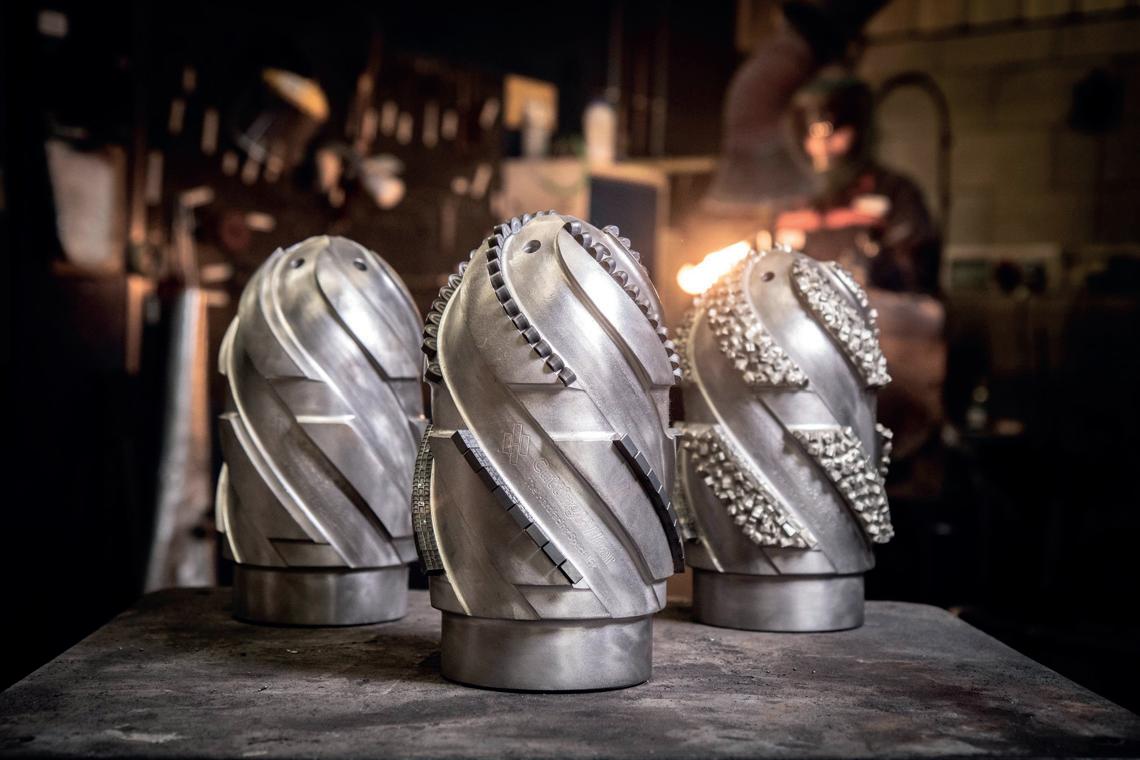


In 2012, we moved into a purposebuilt 38,000 sq ft manufacturing facility across a three-acre site. From here, we manufacture all our hardfacing workshop supplies and a wide range of downhole tools on behalf of others, including multinational service companies. We have a passion for hardfacing, which has led to the creation of many unrivalled technologies used by our global network of customers.
We also provide complete supply manufacture of downhole tools from our Sheffield facility, helping multinational service companies turn their designs into reality. Hardfacing is a very niche market; our customers recognise our deep understanding of this and manufacturing, which places us in a unique position to help them. Our R&D team is at the heart of everything we do, constantly pushing for the next game changer.

How is a day in your role?
Working in a fast-paced and demanding industry such as oil and gas, every day is different and throws up fresh challenges. We are on track with our strong growth plans and have an organised and wellbalanced team to support customers.

With the pressures on rig time, our customers require reliable, on-time delivery and, often, schedule flexibility. Thankfully we are set up to handle this and adapt quickly, hence no two days being the same. This, coupled with the development of new technology, ensures every day is interesting.
Of course, the global pandemic changed how we now work, predominately with a greater emphasis on virtual meetings. However, now that travel restrictions have eased, it is great to be back out visiting our customers in-person and inviting them to our facility. COVID-19 restrictions also led to a greater push to
develop our website and social media channels to showcase all of our capabilities, many of which were unknown to prospective clients.
What has changed since your first day at Cutting & Wear?
Innovation is a core value, so we don’t stand still for long. In the decade I have been here, we have successfully brought new hardfacing creations to the market, such as SupaCutt Xtreme, TSP Xtreme and QuickTip Next Generation Hardfacing System. With the developments we’ve made in machining technologies and capabilities, we’ve really pushed the boundaries to manufacture more complex downhole tools, including Whipstock Systems, Well Bore Clean Up Tools and many more. More recently, with the push for energy transition, we’ve seen some changes as our customers are expanding into the geothermal market, creating greater diversification in our portfolio of work.
How do you differ from your competition?
It is difficult to identify our competitors. Having expertise in either machining or hardfacing is one thing, but bringing these together so successfully truly sets us apart from others. Our hardfacing consumables are our unique designs, explicitly manufactured for industry requirements. Yes, there are other suppliers, but our products have been tried and tested for over 50 years, sustaining an unequalled level of quality.
42 energy focus | www.the-eic.com EIC Member Focus Cutting & Wear MY BUSINESS
Matthew Cooper takes Energy Focus behind the scenes at Cutting & Wear
Cutting & Wear’s unique designs are explicitly manufactured for industry








Hughes Safety Showers is a premier manufacturer of emergency safety showers and eye/face wash equipment.













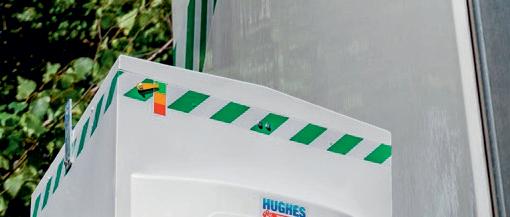



Whether you require a simple drench shower or a fully customized solution, our equipment will provide you with a safer working environment, greater protection against serious injury and peace of mind that you’re compliant with crucial safety standards.




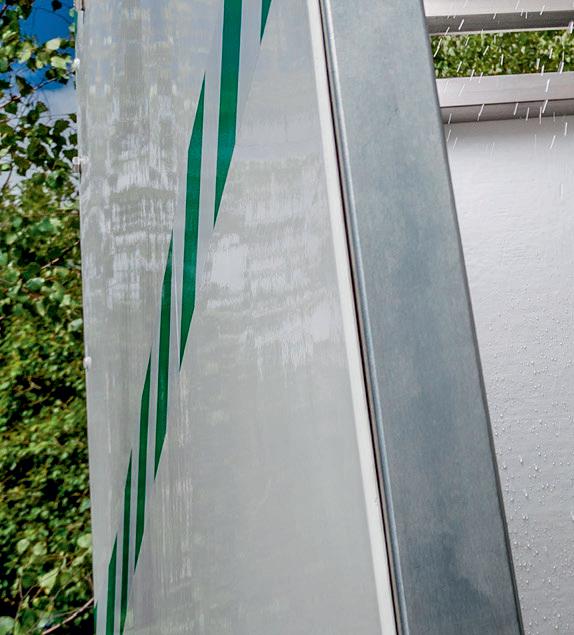


Delivering safety, from the essential to the exceptional.

Get in touch. T: +44 (0)161 430 6618 E: sales@hughes-safety.com
L-R: 1500L
emergency tank shower with eye wash; Self-contained 114L mobile safety shower with eye wash; Self-draining safety shower with eye wash. Emergency safety showers designed to operate in all environments and climates. Stay safe. Stay compliant.
Models pictured
jacketed
nt.


















































































 Stuart Broadley, Chief Executive
Offi cer, Energy Industries
Council
Stuart Broadley, Chief Executive
Offi cer, Energy Industries
Council





























































 Troy Stewart, ABB Process Automation UK Lead, Head of Energy Industries UK and Ireland
Troy Stewart, ABB Process Automation UK Lead, Head of Energy Industries UK and Ireland
































































 Chartered Marketer at JBPRM Ltd
Chartered Marketer at JBPRM Ltd

















































































































 The core challenge facing oil and gas operators today is how to reduce their greenhouse gas emissions, to meet the applicable regulatory requirements, without those emission reductions being overshadowed by excessive capital expenditure requirements. Imagine a quick and efficient tool that quantifies the impacts of emissions reduction opportunities and combines these into economically viable emissions reduction action plans.
The core challenge facing oil and gas operators today is how to reduce their greenhouse gas emissions, to meet the applicable regulatory requirements, without those emission reductions being overshadowed by excessive capital expenditure requirements. Imagine a quick and efficient tool that quantifies the impacts of emissions reduction opportunities and combines these into economically viable emissions reduction action plans.












 By Dawn Summers, Chief Operating Officer, Wintershall Dea and President, GasNaturally
By Dawn Summers, Chief Operating Officer, Wintershall Dea and President, GasNaturally





























































































